Leisure
Museums
Familiarity with the history of the city should begin with the Dnepropetrovsk National Historical Museum named after. D. I. Yavornitsky (D. Yavornytsky Ave., 16; http://museum.dp.ua/).
In February 1849, the Public Museum of Antiquities of Yekaterinoslav Province was founded in Yekaterinoslav. The initiators of its creation were local figures – Governor A. Ya. Fabr and director of the local gymnasium Y. D.Grakhov (that is why the museum was often called “Fabrovsky”). The museum was located in the building of the Potemkin Palace, which belonged to the Nobility Governor’s Assembly. The collection of the museum contained archaeological and historical relics, rare exhibits found mainly in the Yekaterynoslav province, as well as relics of ancient Egypt (mummies of women with children) and ancient Greece. Particular attention was paid to the search and preservation of stone statues, which there were more than 400 in the territory of the province in the middle of the XIX century. In the 1860-1900s, the collection of the museum was located in the premises of the classical male gymnasium (now the corps of the Medical Academy in Cathedral Square).
In 1887, public figure and landowner A. N. Paul opened the first private museum in the city, located in his own house on the Cathedral Square. The collection of A. Paul was more than 4770 items: archaeological finds from the burial mounds and other burials of Yekaterinoslav province, in particular Kryvorizhya, relics of the Zaporizhzhya Cossacks (on the maternal line Paul was the descendant of Hetman Pavlo Polubotok); Egyptian relics and religious items. After the death of A. Paul in 1890, the public of the city made an initiative to establish a provincial museum named after A. N. Paul, which was opened in 1902 at the Commercial School (in the 1902-1933s, D. I. Yavornytsky worked as a director of the Museum). In 1905, the museum named after A. N. Paul took the first visitors in a specially constructed building (based on the model of the Hoffman House in Berlin). The Museum was donated to the Assembly of the Fabrey Museum, the collections of D. Yavornytskyi, I. Akinfiev, A. Sinyavsky and other figures were added to its exhibits. By the efforts of D.I. Yavornytskyi, the museum turned into a real treasury of historical riches of the region and world culture.
Now, 250 thousand Museum items are stored in the funds of the museum. Among them, there are archaeological monuments, relics of the Zaporizhzhya Cossacks, the early printed books of the 16th – 17th centuries. Rare books of the eighteenth and nineteenth centuries. Cult collection, porcelain, watches, furniture, weapons and many other monuments of history and culture.
Every year the museum is visited by more than 300 thousand people, for which 7000 tours are conducted, more than 60 exhibitions are functioning. The museum also hosts meetings, book presentations, museum living rooms, nightly theatrical excursions, museum festivals, archaeological circles, literary studios and clubs.
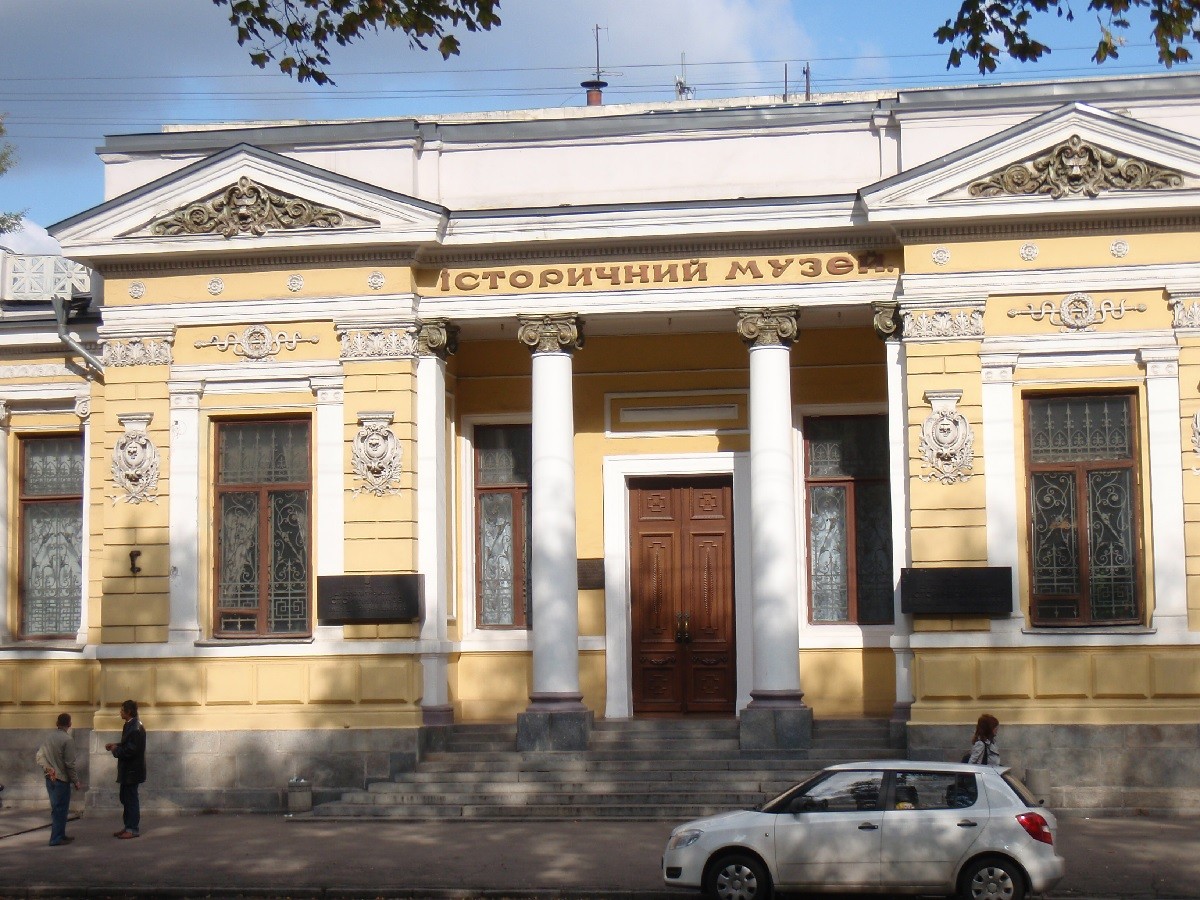
Dnipropetrovsk National Historical Museum
“Stone women“
In Dnipro City, in the historical museum named after D. I. Yavornitskyi, there is the largest collection of stone plastics in Ukraine – 86 stone women (along with Cossack crosses and antique sculptures, the collection has about 100 exhibits). The most unique monument in the collection of stone plastics is the Kernosov idol – the anthropomorphic stele of the Age of the Eenolithic period (the image of the Proto-Paradise deity, mid-III millennia BC), which has no analogues in any of Europe’s museums. The collection of stone women was created together with the museum.
For the sights of the inhabitants and guests of the city on the open site of the museum are medieval Turkic Polovtsian statues (they are in the museum 67). They date from the XII – the first half of the XIII century. When the Polovtsian monumental art reached its highest peak. In the steppe of the Dniprovskyi Superior State, these statues set up Polovtsian (or Kipchaksky) nomadic tribes that came to the Eastern Europe through the Volga from Asia. In the vicinity of the rapids along the banks of the Dnieper River was the largest association of Polovtsy – Pridneprovsky horde.
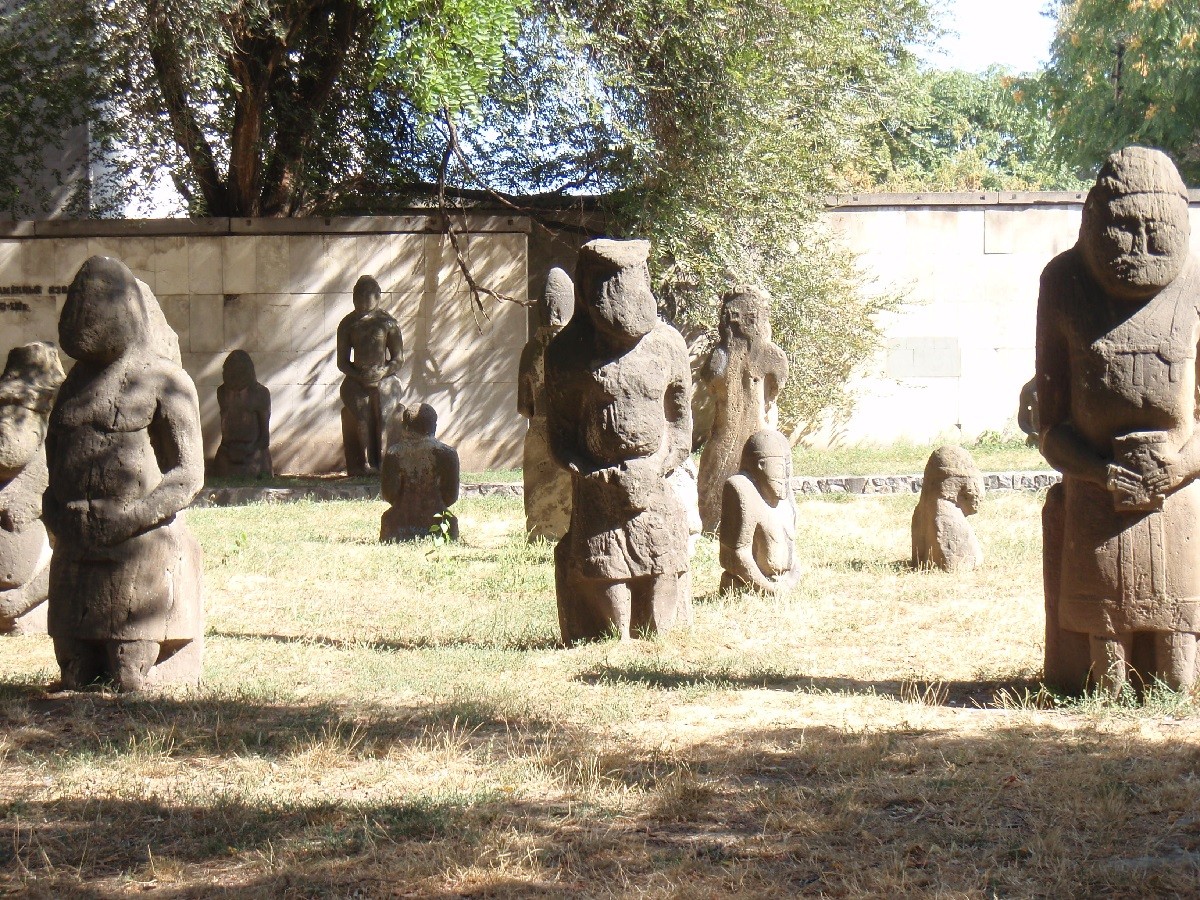
Polovtsian statues from the collection of the Dnipropetrovsk Historical Museum
Other interesting exhibits of stone sculptures are presented in other museums of the Dnipropetrovsk region, which differ in material and technique of production.
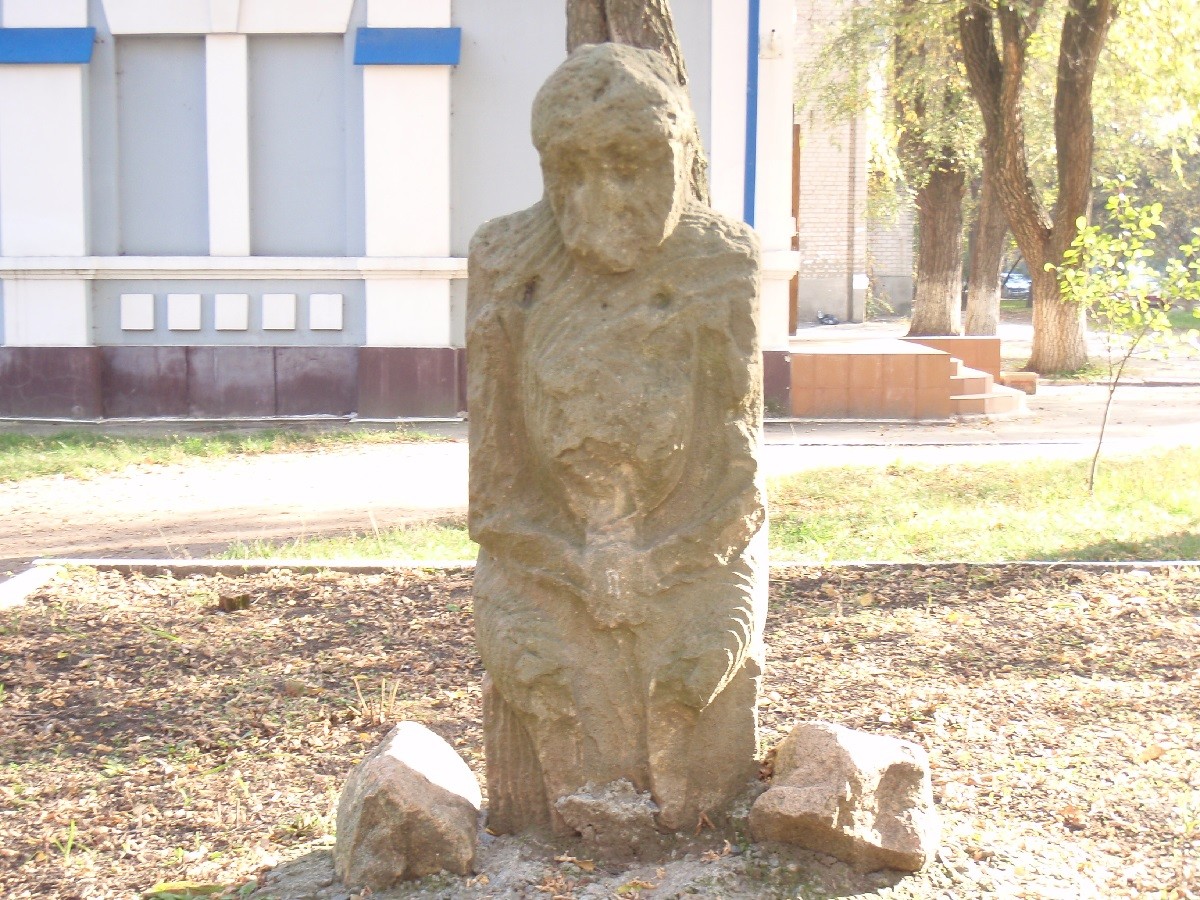
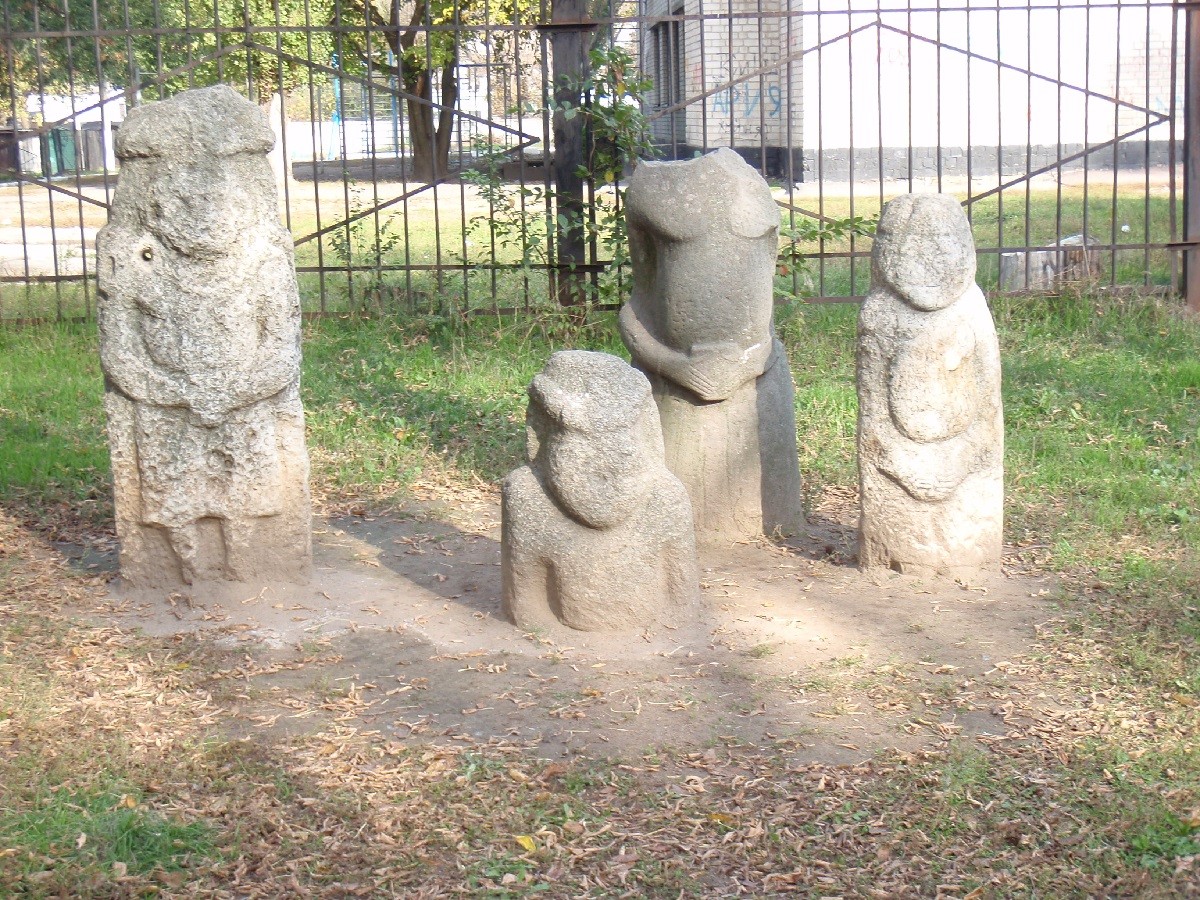
Stone women from the collection of the Novomoskovsk historical-lore museum
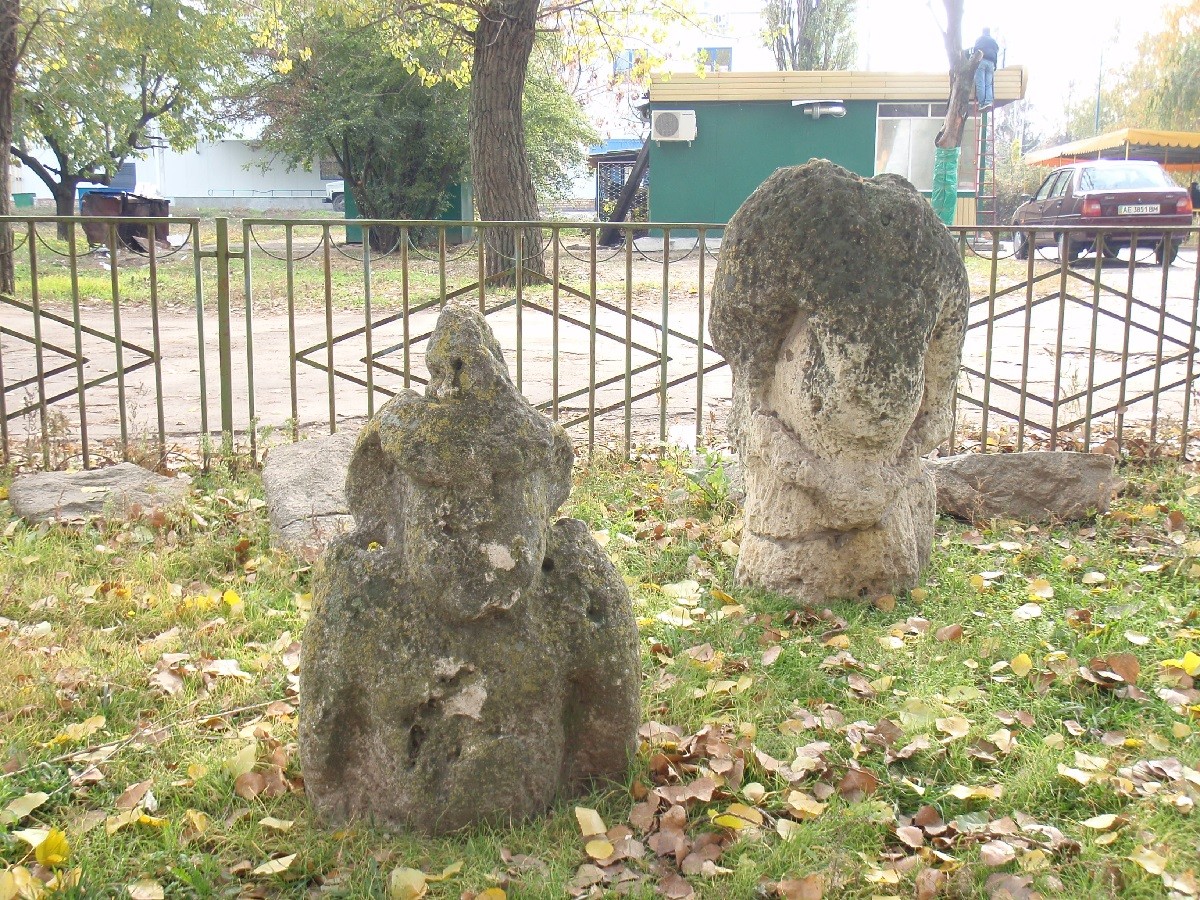
Stone women from the collection of the Nikopol Museum of Local Lore
Dnipropetrovsk Art Museum
For those who are interested in works of art, a visit will be made to the Dnipropetrovsk Art Museum (Shevchenko St. 21; http://artmuseum.dp.ua/; https://vk.com/dneprartmuseum ).
The museum was opened in 1914. Its first exposition was located in the Potemkin Palace (now the Palace of students of DNU) and consisted of 64 works by Russian and Ukrainian masters. In the 1920-1930s, the works of domestic and Western masters from the collection of D. I. Yavornitskyi, as well as from the State Tretyakov Gallery (Moscow) and the Hermitage (St. Petersburg) were transferred to the museum.
In the permanent exhibition you can see the works of outstanding masters of the past: V. Borovikovsky, I. Shishkin, I. Levitan, K. Korovin, V. Serov, I. Repin, V. Makovsky, M. Pymonenko, K. Kostandy, S. Vasylkivsky , A. Murashko, D. Burliuk, B. Grigoriev. A peculiar pearl of the museum collection is the work of the Katerynoslav artist-symbolist M. Sapozhnikov. Most of the collection of arts and crafts of the XVIII – XXI centuries represent works of Ukrainian culture. It is Opishni ceremics, a lofty Lviv glass. A special place in the museum collection is dedicated to the works of famous masters of the Petrikivka decorative painting: Tetyana Pati, Nadiya Bilokin, Theodore Panka, Vasyl Sokolenko and their students, followers. The museum collection complements the collection of Western European porcelain from Germany, France, Denmark and a small collection of oriental art from Japan, China.
Museum of pilots of the Dnipro rapids
Visiting the museum makes it possible to get acquainted with the traditions and customs of pilots – representatives of one of the oldest professions that conducted the trial through the Dnipro rapids. Pilot settlements in our region existed from the middle of the XVII century. And their profession was in demand until 1932 – the construction of the Dniproges.
The museum was created in 1994 by the last Dnieper pilot, a former political prisoner, a teacher, ethnographer G.N. Omelchenko (1911-2003). The museum is located in the House of Culture on the southern outskirts of the Dnieper, in the village of Lozmanka Kamenka (w / w Victory). The exposition presents anchors, oars, clothes for pilots, embroidered towels and shirts, chests, pitchers, folk paintings and dozens of photographs.
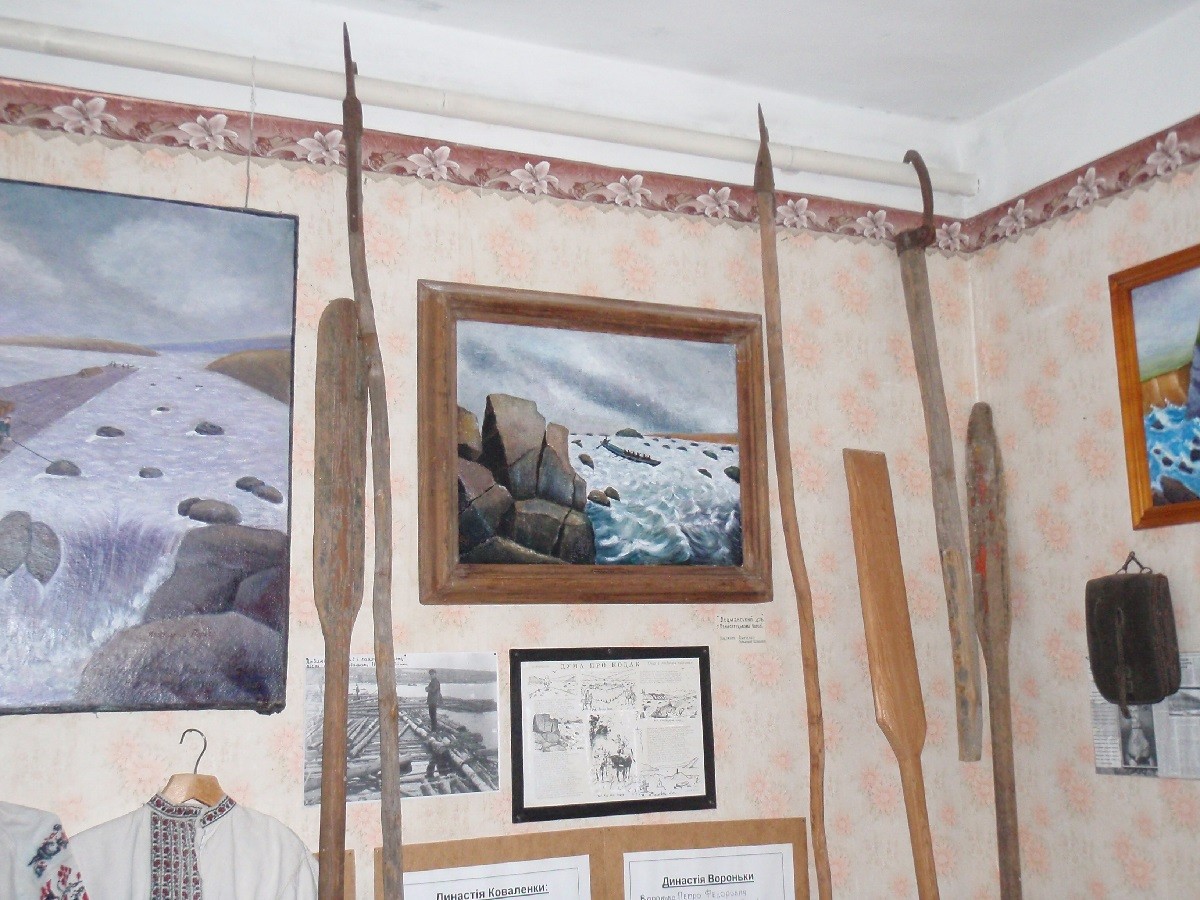
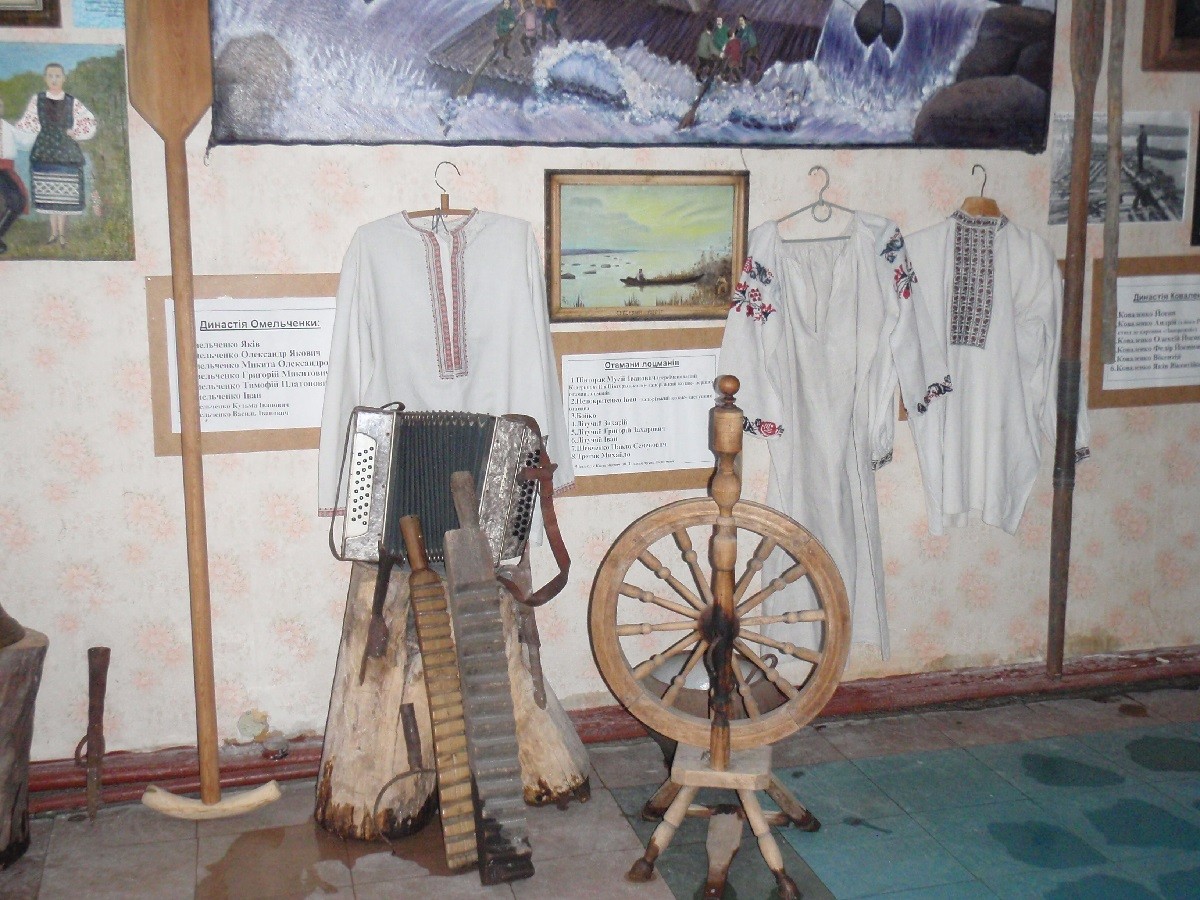
Exhibits of pilots of the Dnipro rapids
Museum “Memory of the Jewish people and the Holocaust in Ukraine”
The museum is the third largest Holocaust memorial complex in the world (opened in 2012). The museum is located on three floors of the Menorah Center.
The first hall of the Museum “The memory of the Jewish people and the Holocaust in Ukraine” is devoted to the traditions of Judaism, as well as the peculiarities of the life of Jews in cities and towns. The Great Hall of the Museum is dedicated to the Holocaust. In the Holocaust hall there is the “Hall of Remembrance – the Hall of Names”. At the exit of the Museum, visitors can see the installation of “The Broken World”, reminiscent of the catastrophe of civilization after the coming of the Nazis.
Exhibitions, besides traditional showcases with exhibits, use multimedia installations, holograms, broadcasting of video and audio recordings. Highly artistic works of artists and designers, unique exhibits, author’s educational programs testify to the uniqueness of the museum. The Ukrainian Institute for the Holocaust “Tkuma” (“Revival”) (www.tkuma.dp.ua) is involved in the development of the museum.
Aerospace Museum named after. A. M. Makarov
Dnipro is the cosmic capital of Ukraine. On the basis of the National Center for Aerospace Education of Youth (http://www.unaec.dp.ua/) a unique aerospace museum complex has been created. Real space stations, satellites, and missiles are being shown. The exposition of the museum consists of two sections: an overview of the exhibition in the museum hall and an overview of missile weapons samples at the museum’s site.
Excursion to the pipe-rolling plant “INTERPIPE STEEL”
Excursion to the largest modern electric-steelmaking complex in Europe and the CIS is very interesting for students of our university and attractive for students studying in other cities of Ukraine.
INTERPIPE is the first factory built from “zero” in independent Ukraine, in which the innovative steelmaking technologies, the new culture of production and contemporary art (http://www.interpipe.biz/kso/) harmoniously combine. The uniqueness of the plant (not only on the scale of the Dnieper, but also throughout Ukraine) is provided by modern equipment, green technologies (waste-free production) and interesting art objects created by Olafur Elliasson: artificial Sun – Dnipropetrovsk East, “Your Tunnel of Time”, “Your Fiery Pattern,” “Your Thinking Bridge,” “Material is Movement.”
City tour
The city’s monuments
For those who like walking walks, it will be exciting to get acquainted with the interesting sights of our city. The most famous monuments of architecture in the Dnieper were built in the late nineteenth and early twentieth centuries. A significant part of them is concentrated in the central part of the city – on the modern D. Yavornytskyi Avenue or not far from it.
The Upper part (the northern part of the modern Sobor region) is located on the main of the three hills, from which began the development of Yekaterinoslav. The oldest surviving buildings in the city can be seen on the modern street of Sergey Efremov – houses number 8 and 10 were built in the 1790’s.
Cathedral Square – one of the most beautiful places in Dnipro City. Hundreds of townspeople and guests of the city visit it. Someone comes to the Cathedral of the Transfiguration, others are in the historical museum, the third – to honor the memory of the soldiers buried here, the fourth – just to rest in the park.
Catherine II and the Austrian Czar Iosif II solemnly laid The Transfiguration Cathedral on May 9, 1787. The governor-general of the province, Prince G. Potemkin, planned that the new temple would surpass the great cathedrals of St. Peter and Paul in Rome. It was completed in 1830-1835 under the project of the outstanding architect of St. Petersburg A. Zakharov.
Next to the cathedral is a mile of miles, built in honor of the journey of Empress Catherine II to the South of the Empire. This obelisk is considered the first stone building in Ekaterinoslav.
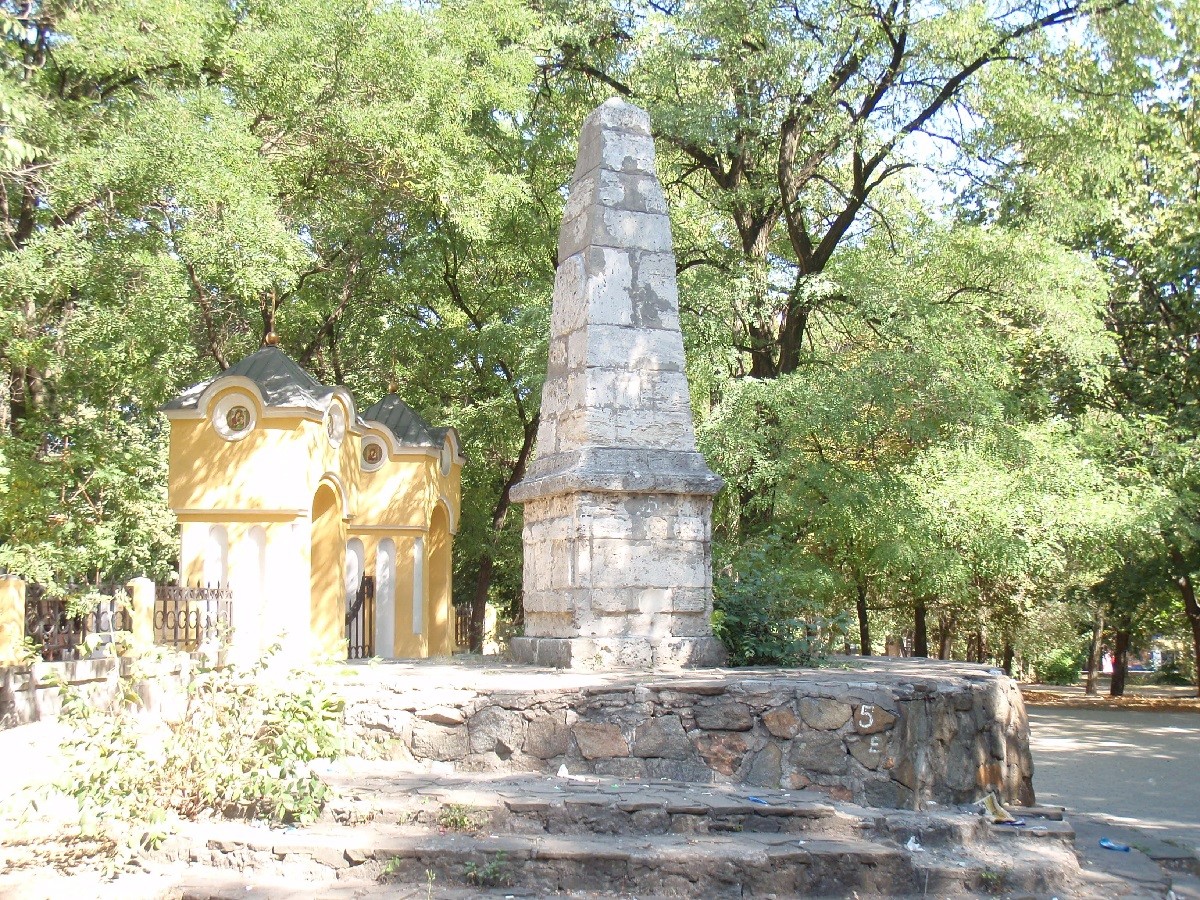
“Mile of miles” (1787)
Park after T. H. Shevchenko
The witnesses of the city’s foundation are landscapes of the late 18th century, preserved till now – Taras Shevchenko Park and Lazar Globa Park. They were planted by the Cossack master Lazar Globa: at first – the upper garden (now the Taras Shevchenko Park), and when Potemkin bought it for the construction of his palace, he laid down another garden in the settlement of Polovitsa near the lakes (now the park L. Globe).
Potemkin Palace (now the Palace of Students of Dnipropetrovsk National University) was built in 1787-1789 under the project of I. Starov. Around the palace, on the south-eastern part of the hill, was arranged an English park with greenhouses, where exotic plants grew (the garden of the park was mastered by the park, William Gould). After the death of the master, the palace collapses and collapses.
In the 1930’s and 1950’s, the palace building was radically rebuilt for meetings of the Noble Assembly.
During the Second World War, the palace burned down. In 1952, it was reconstructed and acquired a modern look. The history of the palace is connected with legends about underground passages, which are already of interest to more than one generation of residents of the city.
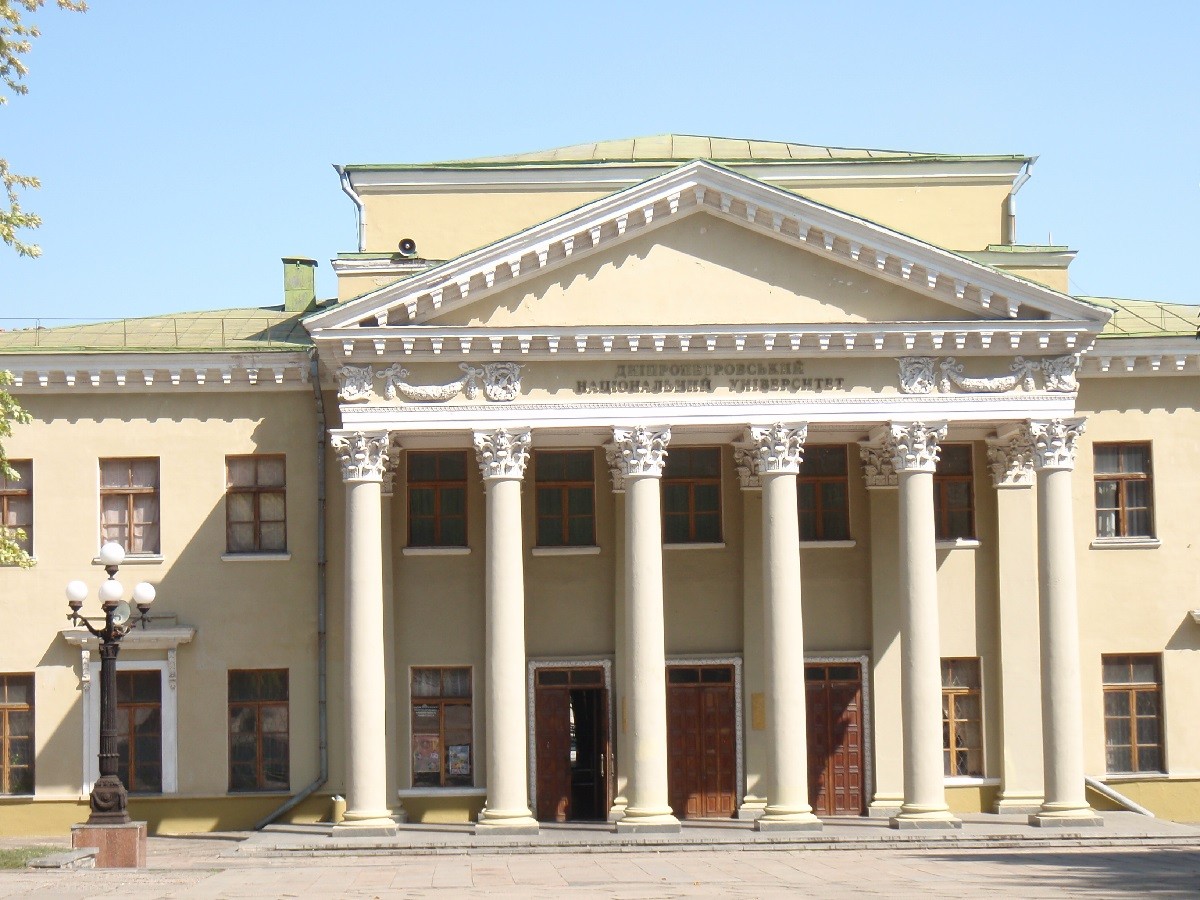
Potemkin Palace
There are many monuments and interesting sculptures on the territory of the park. Here, the Summer Theater, popular in the Soviet era, was built. Many residents together with children come to this park to relax and feed the squirrels.
From the observation deck there is a picturesque view of the Dnipro River, the Sichaslavsky Quay and the Monastery Island. Here are celebrating the most significant events or simply resting.
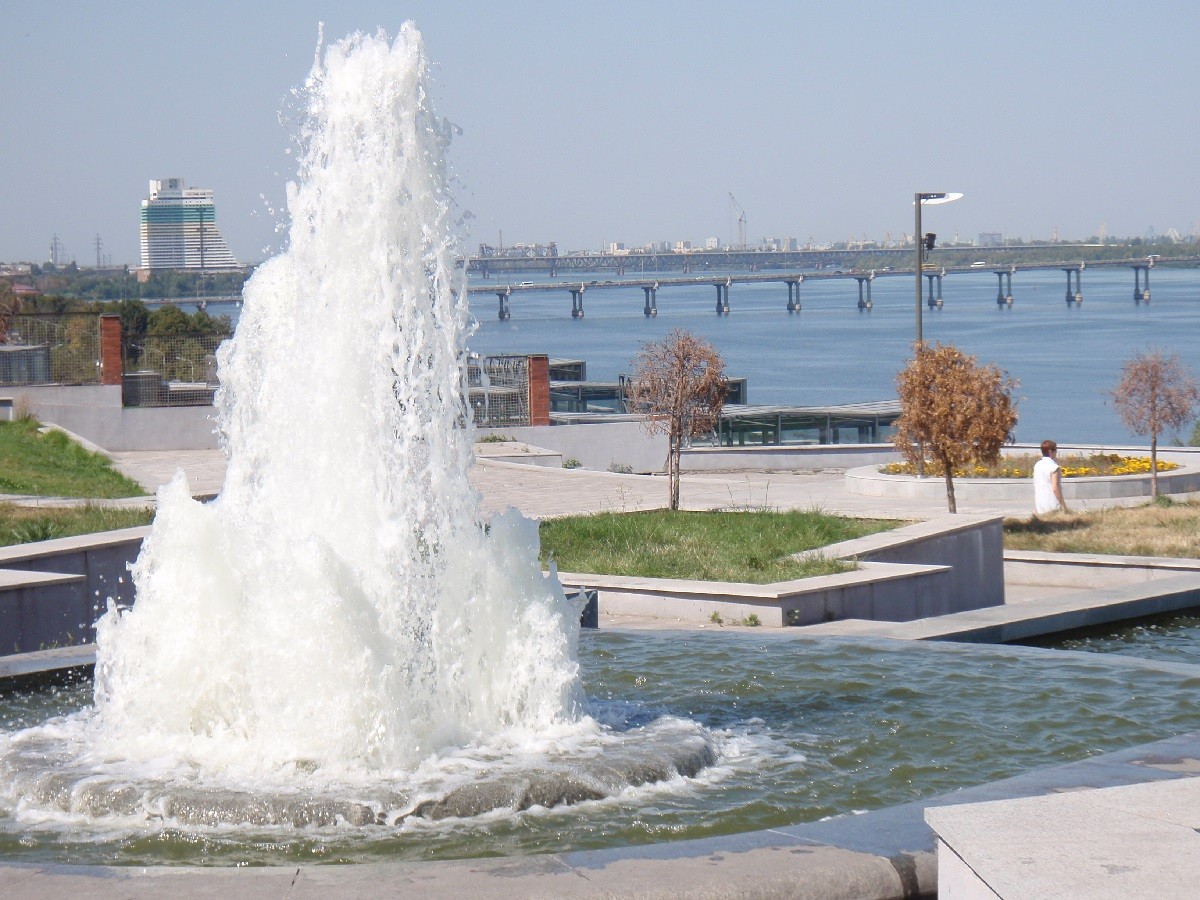
Fountain on the observation deck in the park named after T. H. Shevchenko
An attractive object for the city’s residents and tourists is the Monastery Island, whose history is rich in legends and historical events. There is a widespread opinion about visiting the island of Andrew Pervozvannym, Princess Olha, Prince Volodymyr the Great. By the invasion of the Mongol-Tatars on the island there was a Byzantine monastery (hence the name of the island).
During the times of Kyiv Rus, on the Dnieper River there was an important trade route “from the Vikings to the Greeks”, as evidenced by the findings of the Byzantine coins of the VIII-IX centuries. Regarding the Middle Ages, there is a mention of Prince Dmitry Vyshnevetsky’s intention to build a new Cossack fortress (after the destruction of the Sich on the island of Khortytsia in the middle of the sixteenth century). At the end of the eighteenth century, Governor-General G. Potemkin planned to build on the island of the University and the Academy of Arts, and even invited famous Russian and foreign scholars to Yekaterinoslav. However, these plans were not destined to be realized. After the death of G. Potemkin in Yekaterinoslav left a few state-owned and private houses, and only Potemkin’s house and garden were distinguished by their beauty.
Later the island changed the owners and names until 1889, when it was acquired by Bogomolov, whose name fixed on the island until the middle of the twentieth century. At the beginning of the twentieth century, the island became a pillar for the Merefo-Kherson railway bridge, on the shore there was a yacht-club base. In the middle of the twentieth century, the island, already wore a new name – Komsomolskyi, was attached to the park them. T. Shevchenko and connected with him by a pedestrian bridge, which made him a popular holiday destination for the inhabitants of the city.
In 1999, in the northern part of the island, an orthodox church of St. Nicholas was built, which very well fit into the landscape and created a more coherent image of this picturesque corner.
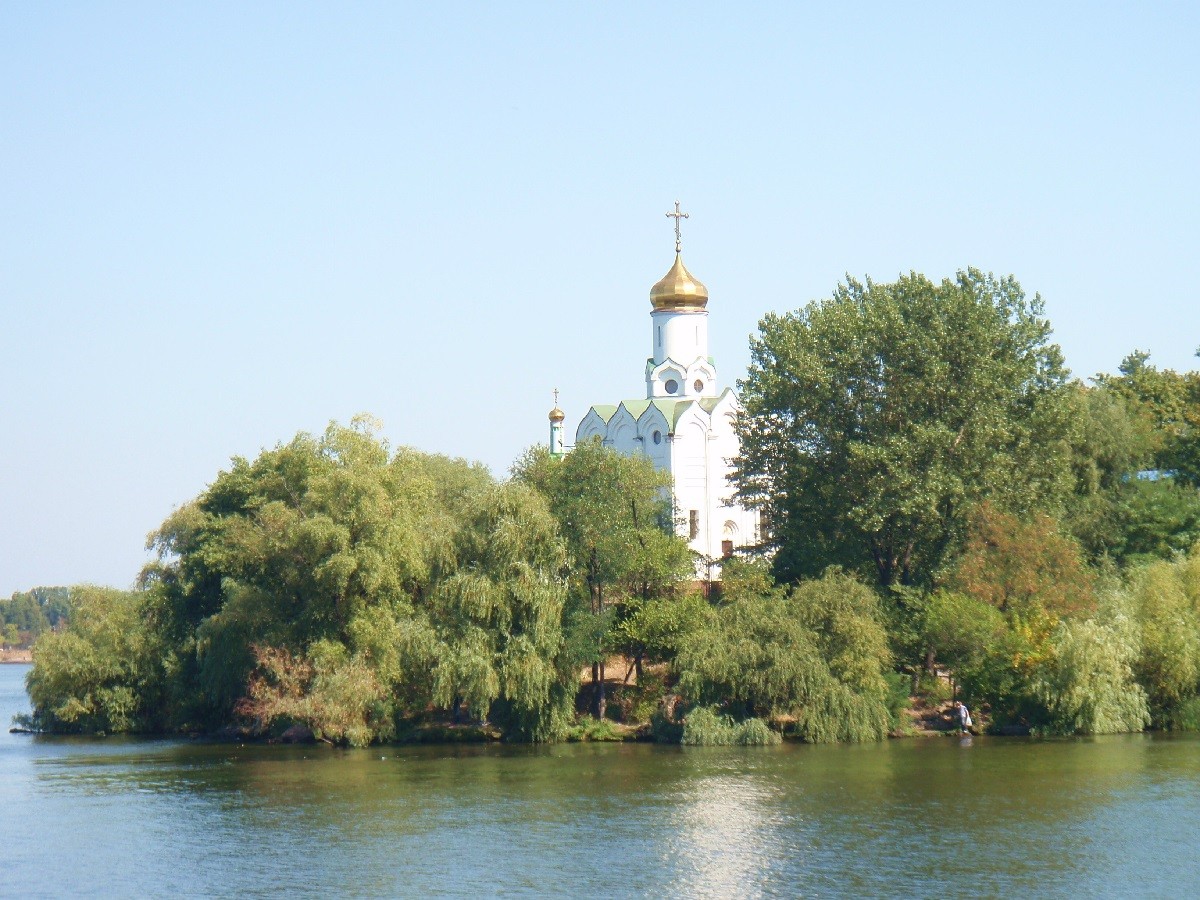
Monastery Island, St Nicholas Church
There is a monument to T. Shevchenko on the island, a 17-meter artificial waterfall “Pogyg Revuchyi”, an aquarium of freshwater fish, which readily visit sightseeing tours, entertainment attractions, and beaches. The cableway and pedestrian bridge connect the island with the Upper part. Embankment of the city of Dnipro is one of the most prominent sights of the city. It passes along the right bank of the Dnipro River from the residential paradise Sail in the west to the Southern Bridge in the south, where it passes into the street Dalkeka. This is the longest promenade in Europe (23 km), it consists of three sections – the Naberezhnye Zavodsky, Sichaslavsky and Victory.
Construction of the quay began in the middle of the twentieth century. In 2005-2007, the Dnipro River embankment was completely reconstructed: in the middle was a green boulevard, a new pavement tile was laid, modern lighting was installed, fountains erected, sculptural compositions.
Sichaslavskaya Embankment is a favorite recreation area for residents of the city, foreign visitors and tourists. One of its main objects is the “White Swan” fountain, set on the surface of the river opposite the hotel “Dnipropetrovsk”. The fountain rotates and “waves wings”, and the height of the jet water reaches 50 meters. Here are two miniature fountains “Geyser” and a fountain “Sphere”.
Also, on the waterfront, you can see the Family Shop – a 50-meter shop decorated with artistic forging (as the longest lava is listed in the Ukrainian Book of Records). Several installations represent the way of life of the family – the moment of the meeting of lovers, the decision to be together, the birth of children, peace, care and communication. On the bench, you can sit next to Cupid, or hide under the umbrella. Near the pedestrian bridge towards Shevchenko Park, there is a composition of Lovers of Lovers and Trees of Happiness, made by local blacksmiths and donated to the inhabitants of the City Day. Lava and the tree have become a true symbol for all lovers. At this point, everyone aspires to appoint a date, and loving parties leave here the castles of happiness.
Dnipropetrovsk Circus is located on the Sichaslavskaya Embankment, which was built on the project of Pavel Nirinberg and is one of the business cards of the city. The building is made of shiny metal, equipped with spectacular backlighting. Along the waterfront are the famous new buildings – two 28-storey twin towers, part of the architectural ensemble “Krutohorny”. Five bridges connect the right and left banks of the Dnieper River. The city of Dnipro is particularly romantic in the light of the lights in the evening. Various youth and cultural and artistic events are held at the Festival Pier.
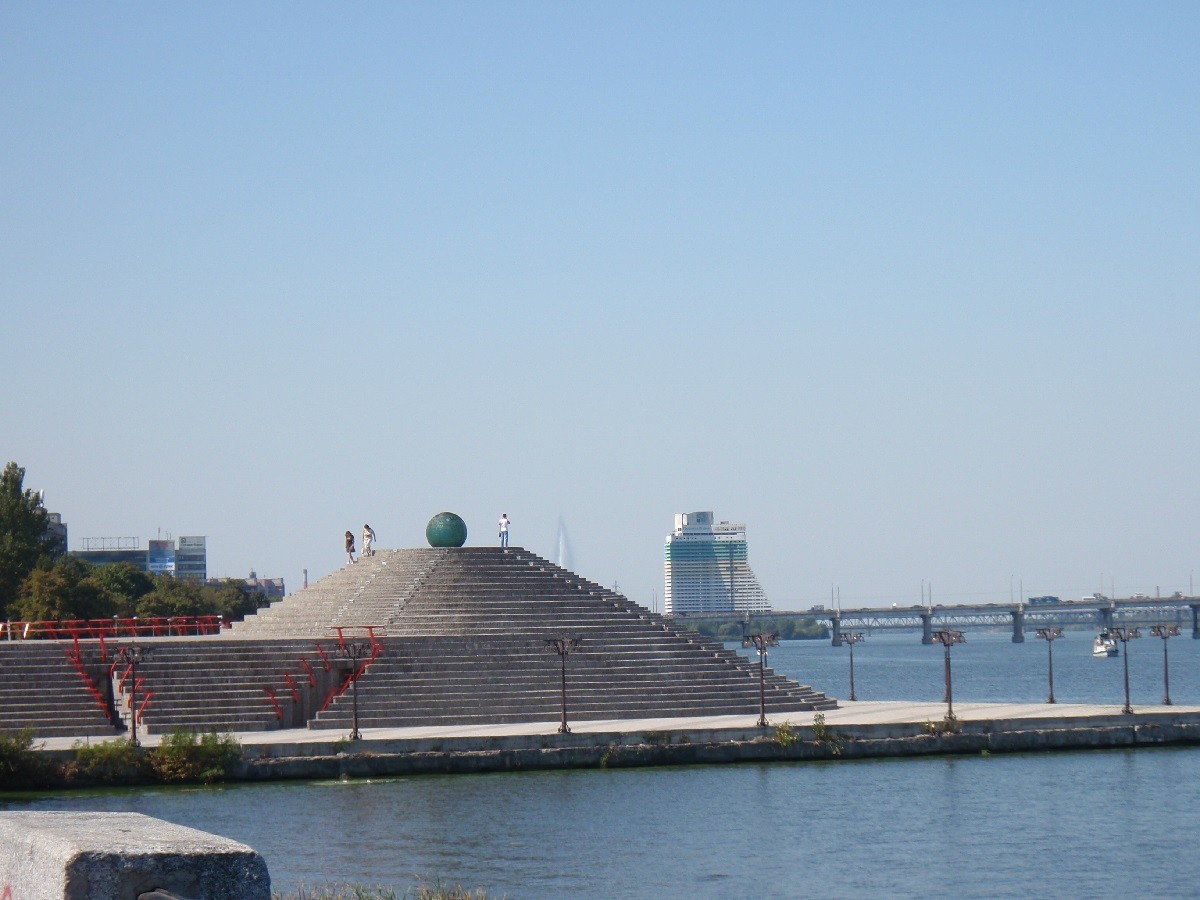
Festival mooring
In the central part of the city are concentrated monuments of the XIX – early XX centuries, which testify to the capitalist era of the development of Yekaterinoslav. An exciting and cognitive excursion along the Dmitry Yavornytsky Avenue (formerly Karl Marx). It is located in the central part of the modern Dnipro River and is considered one of the most extensive avenues in Europe. The official name “Catherine Avenue” got the main street of the city in 1834. Boulevard on the avenue stretches to the State Garden (now the park of Lazar Globa), which was considered the western border of the city.
An individual who changed the life of our region in the second half of the XIX century and contributed to the transformation of Katerynoslav from a provincial town into an industrial city, rightfully considered A. N. Paul, an entrepreneur, a zemstvo figure, one of the founders of the historical museum in Ekaterinoslav. For his services to the city, A. N. Pol received the title of honorary citizen of Ekaterinoslav. The Monument is located near the Governor’s House.
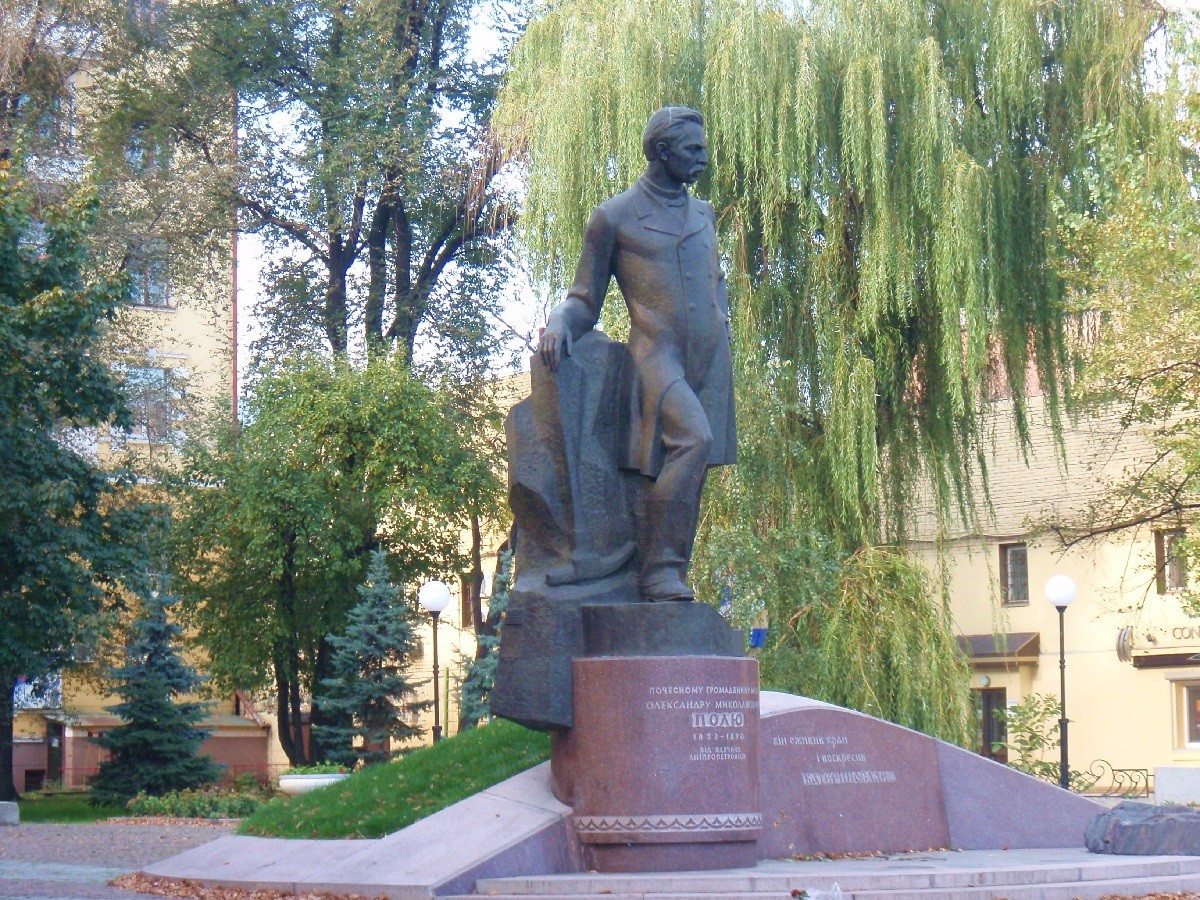
Пам’ятник А. Н. Полю
З 1905 р в місті почала діяти нова поштово-телеграфна контора, прибудована до старого двоповерхового будинку Поштовій станції 1839 г. (пр. Д. Яворницького, 62). Будинки сучасної головної пошти недавно були капітально відреставровані.
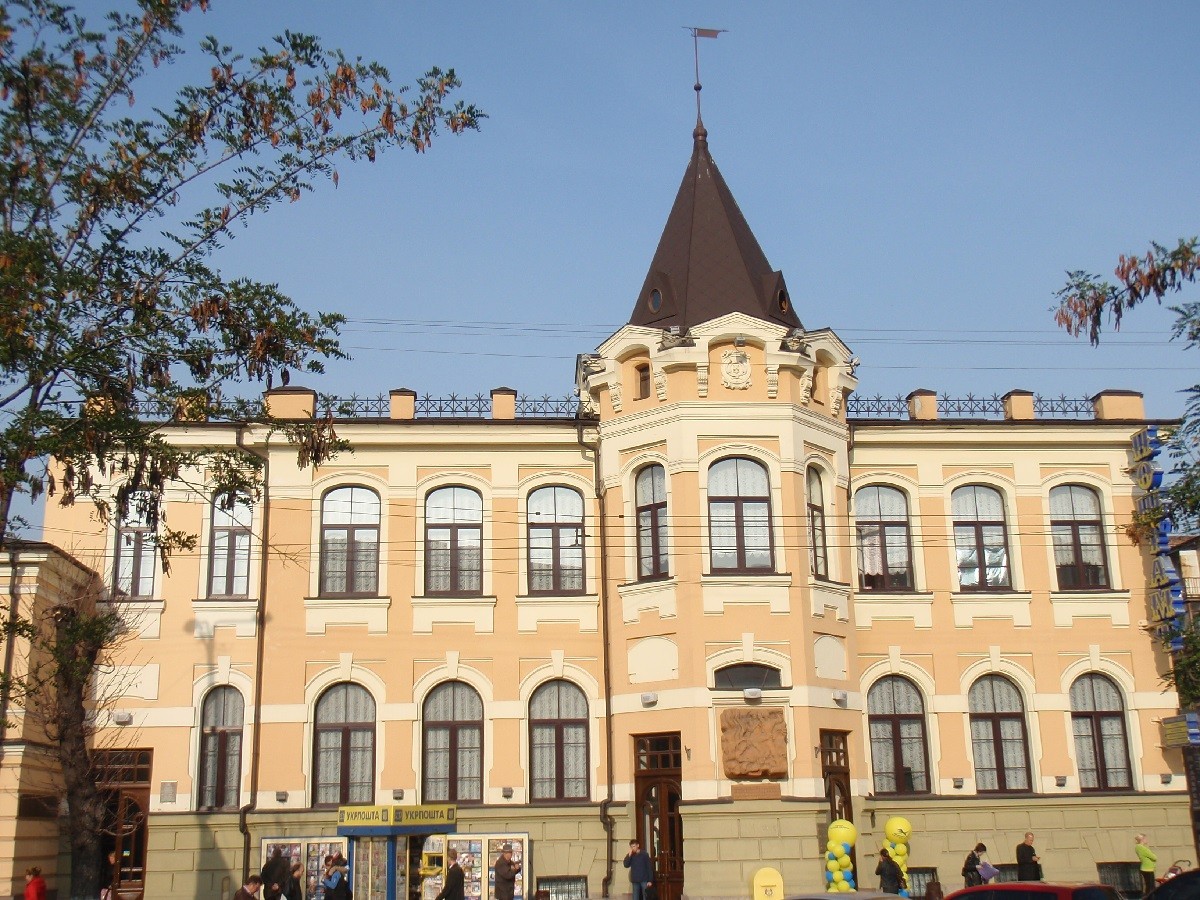
Головпоштамт Дніпра
Одним з основних визначних пам’яток центральної частини Дніпра є Літературний музей (пр. Д. Яворницького, 64). Тут знаходився опікунська комітет іноземних поселенців, який з 1818 по 1845 рр. очолював герой Вітчизняної війни 1812 року, генерал-лейтенант І. Н. Инзов. У травні 1820 в його канцелярії служив відомий поет А. С. Пушкін.
У 1912-1913 рр. на Катерининському проспекті (нині Д. Яворницького, 66) був побудований 5-ти поверховий готель “Асторія” (за проектом А. Красносільського), один з кращих в Катеринославі. В даний час це єдиний готель, який зберігся з тих часів.
На перехресті Катерининського проспекту і вулиці Клубної (нині Воскресенська / Леніна) в 1910-1912 рр. було побудовано триповерхове приміщення відділення Санкт-Петербурзького Міжнародного комерційного банку (нині відділення Національного банку України).
У Будинку губернатора (вул. Воскресенська / Леніна, 14) з 1850 по 1887 рр. розташовувався Англійський клуб (відомий з 30-х років XIX століття), в якому проходила світське життя катеринославського еліти, а пізніше перебувала канцелярія губернатора. Зараз приміщення належить “Приватбанку”.
Одним з найбільш цікавих будівель Катеринослава є “будинок” В. Хреннікова або “Український дім”, а нині – 5-ти зірковий готель “Україна”. Він був побудований в 1910 – 1913 рр. в стилі українського бароко і модерн на розі Катерининського проспекту і Первозванівській вулиці (нині Короленка). Будівля прикрашали п’ять багатоярусних шатрових веж, на стінах – майоліка за мотивами народної творчості. На двох сусідніх вежах зображено козака з мушкетом. Власником будинку був місцевий мільйонер, меценат і український патріот Володимир Хренніков. Він задумав його не просто як житловий прибутковий будинок, а символ Запорізької Січі. До революції 1917 р в будинку розташовувалися театр “Палас”, ряд магазинів.
У 1901-1903 рр. на перехресті проспекту і вулиці Управской (нині Виконкомівська) за проектом архітектора Д. С. Скоробогатова було побудовано нове триповерхове приміщення Міської Думи (нині Училище культури, пр. Д. Яворницького, 47). На цокольному поверсі розміщувався Міський банк, а з південного боку знаходилося двоповерхове приміщення пожежної команди.
Нові обриси вже сучасний центр міста придбав у зв’язку з будівництвом бізнес-центру “Босфор” (Катеринославський бульвар). Це був один з перших торгово-офісних центрів такого рівня в Дніпрі (включає бутики, кафе, елітні ресторани, магазини і офіси). Вулиця на цій ділянці перетворена в пішохідну зону з фонтанами, літніми кафе, місцями відпочинку та зеленими насадженнями.
Сучасний центр міста справляє враження, що Дніпро – динамічно розвивається місто контрастів.
Історичні околиці міста
В околицях міста знаходяться залишки трьох козацьких фортець: Кадацької, Новокадацкой і Богородицької (Новобогородицької). Їх відвідування можливо в складі організованих туристичних груп.
Фортеця Кодак – пам’ятник загальнодержавного та світового значення козацької епохи. Її залишки збереглися на території села Старі Кодаки (поблизу аеропорту). Фортеця була побудована у 1635 р польською владою за проектом і під керівництвом французького інженера Г.-Л. де Боплана на правому березі Дніпра, на високій скелі – тут знаходився перший дніпровський поріг. Для побудови фортеці використовувалися земля і дерево. Її призначенням було контроль навколишніх річкових і сухопутних доріг і всіх дій запорізьких козаків. У серпні того ж року козаки на чолі з І. Сулимою захопили і зруйнували фортецю. У 1639 р фортеця була відновлена німецьким інженером Фрідріхом Геткантом. Її територія збільшилася в три рази. Поступово біля фортеці виникло село, яке зараз називається Старі Кодаки.
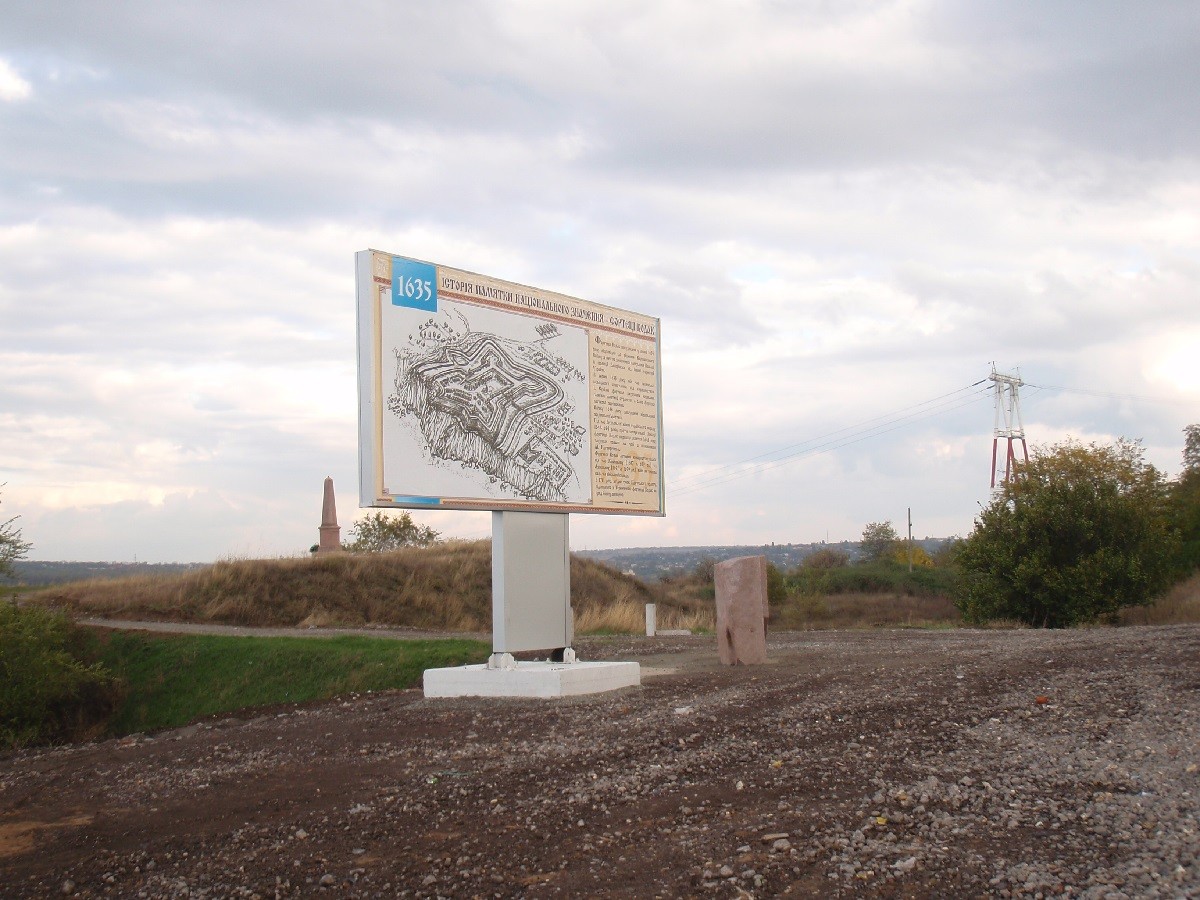
Карта-схема фортеці Кодак
Кодацьку фортецю відвідували відомі польські воєначальники і представники влади, шляхта, козацька старшина. У Кодацької фортеці служили поляки, німці (в тому числі шведи, голландці, данці), представники української козацької старшини. Тут були: коронний гетьман С. Конєцпольський, Стефан Чарнецький, один з кращих полководців Речі Посполитої, Марк Собеський, брат майбутнього короля Речі Посполитої Яна III Собеського (1674-1696 рр.), Адам Конєцпольський, племінник коронного гетьмана і багато інших офіцерів.
1 жовтня 1648 р гарнізон фортеці перейшов на бік Української козацької держави Богдана Хмельницького. На згадку про цю подію в 1910 р за рахунок Катеринославського губернського земства на одному з бастіонів фортеці був установлений обеліск (за пропозицією Д. І. Яворницького).
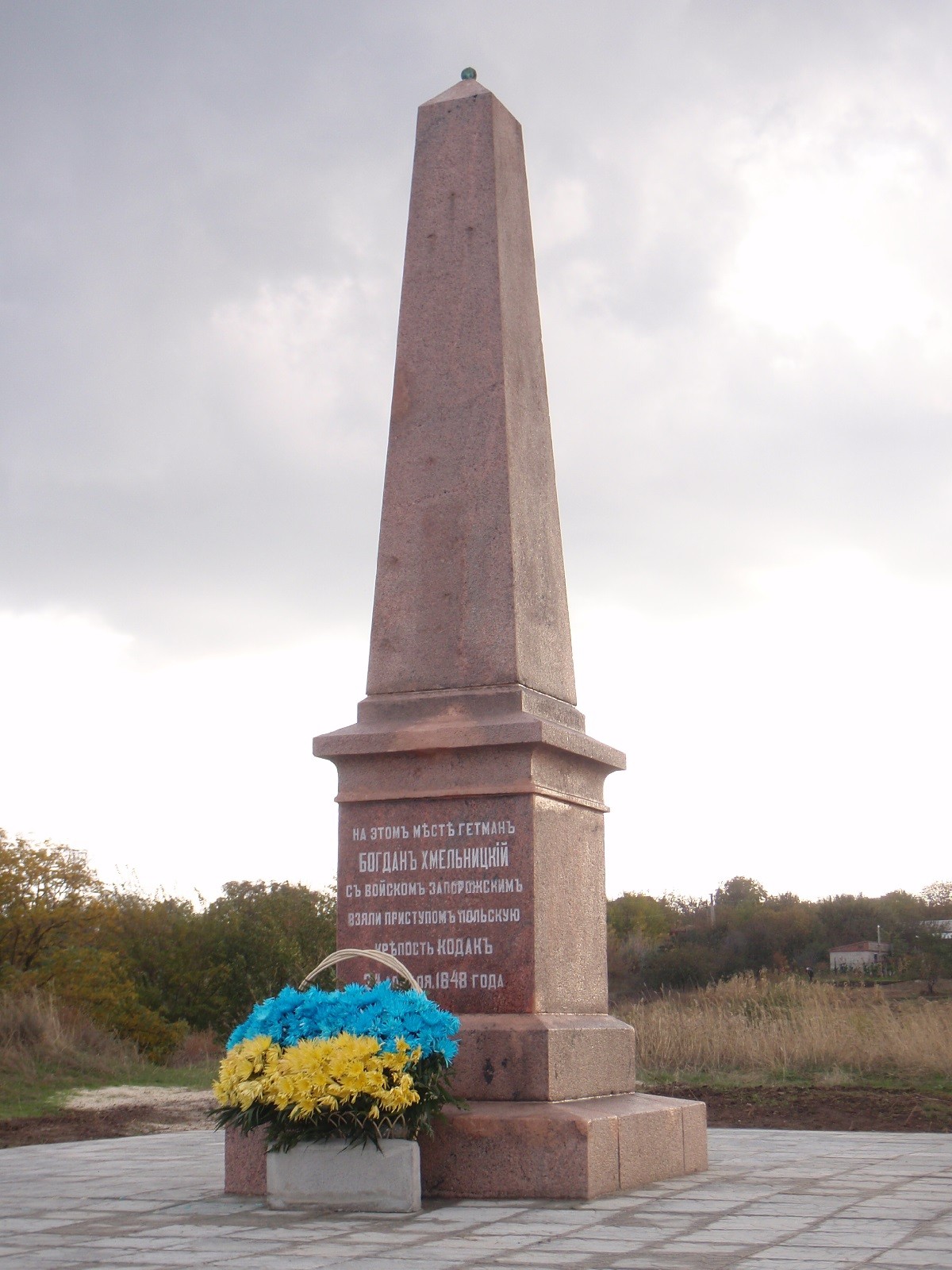
Обеліск Д. І. Яворницького на збереженому бастіоні
У 1656 р Кодак перейшов в підпорядкування Запорізької Січі. Тут була створена берегова стража козаків-лоцманів, які проводили суду через дніпровські пороги. Фортеця була зруйнована в 1711 р Під час російсько-турецької війни 1735-1739 рр. її частково відновили. Після ліквідації Запорізької Січі в 1775 р фортеця перебувала в дуже занедбаному стані. Жителі Старого Кодака професійно займалися лоцманства аж до 1932 р, коли після будівництва Дніпрогесу річкові пороги пішли глибоко під воду. З початку XX століття на території Старого Кодака стали активно добувати граніт і пісок для будівництва лінії Мерефо-Херсонської залізниці. Промисловий видобуток граніту в другій половині ХХ століття сприяла руйнації валів і бастіонів фортеці. Гранітний кар’єр, який існував до 1993 року, знищив половину валів і бастіонів редуту з боку Дніпра разом з частиною скелі. На території колишньої фортеці залишилося глибоке штучне озеро.
Разом з цим, з вцілілого бастіону відкривається чудовий вид на місто, Самару, навколишні острови і населені пункти.
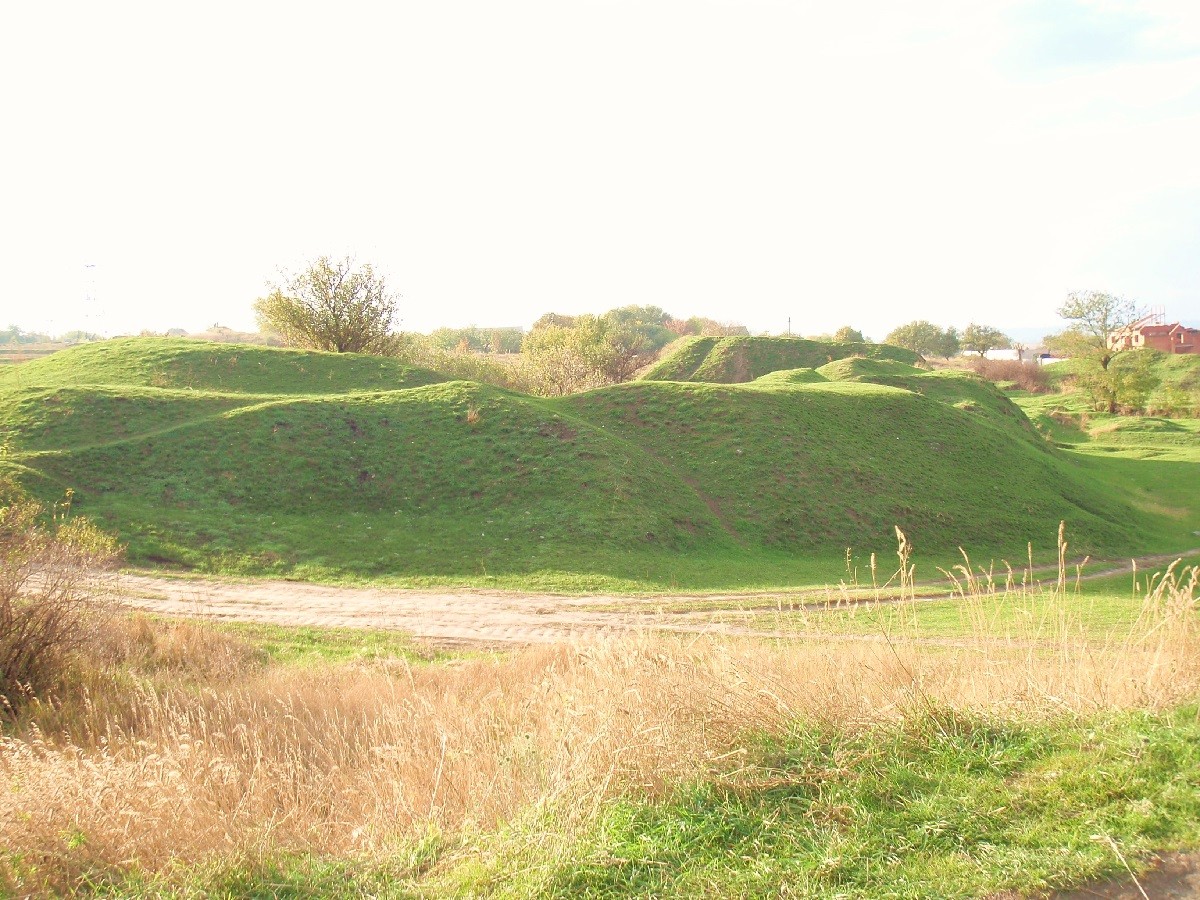
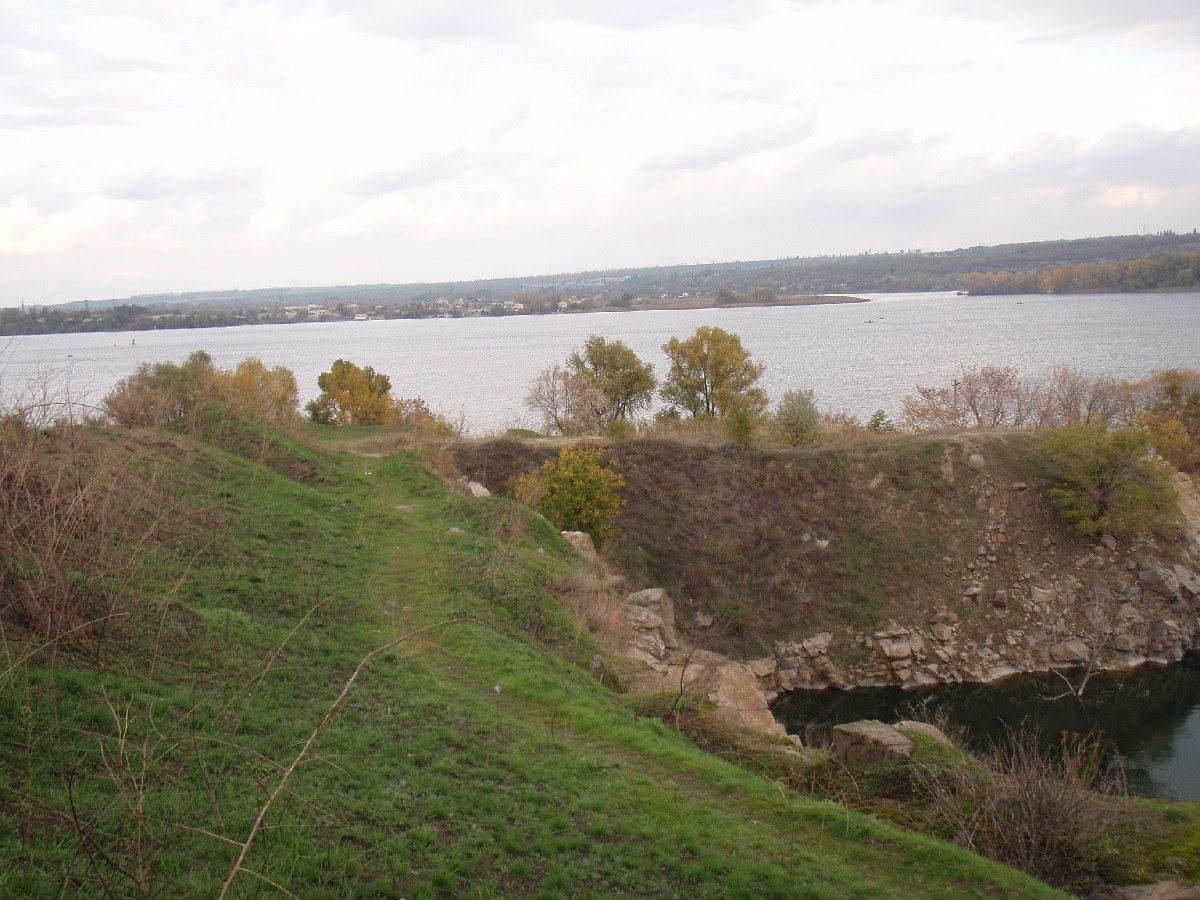
Залишки валів фортеці Кодак
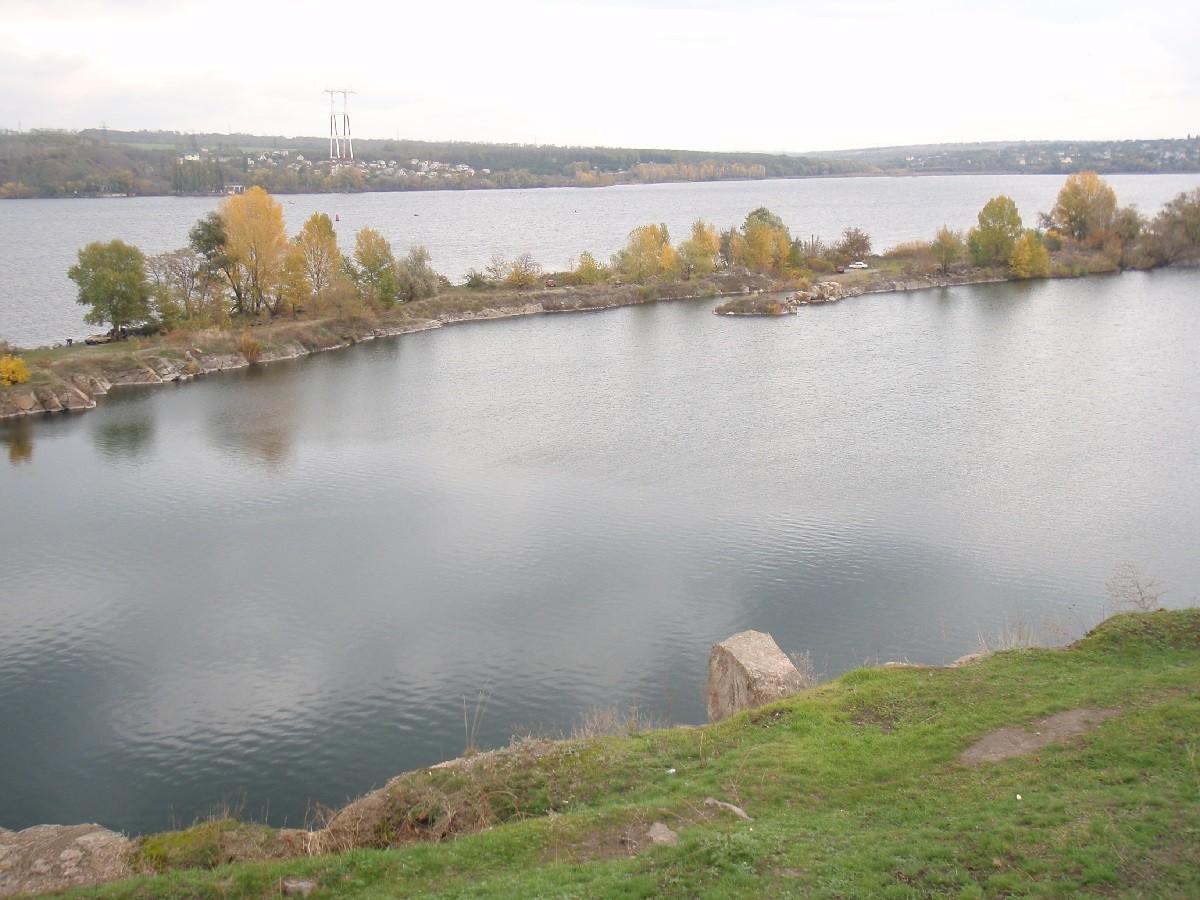
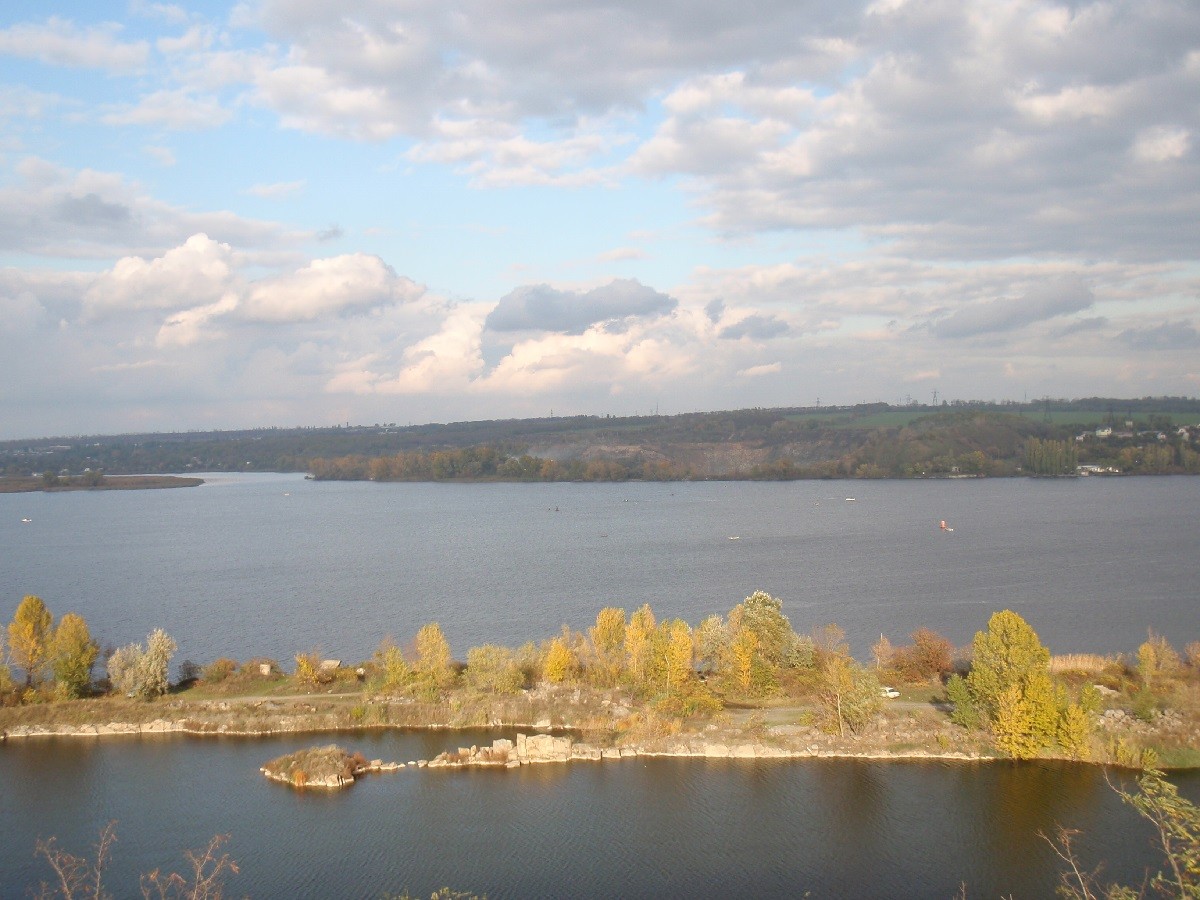
Озеро на місці гранітного кар’єру
Пам'ятки області
Петриківка
Одним з найбільш привабливих об’єктів для гостей Дніпропетровської області є відвідування Петриківки – знайомство з самобутньою українською національною стилем живопису, в основі якого лежить образне сприйняття рідної природи, любов до української землі.
Петриківка – старовинне козацьке село, засноване в XVIII столітті, розташоване на притоці річки Оріль. Походження села пов’язують з ім’ям останнього кошового отамана Запорізької Січі, Петра Калнишевського. Розписані дощечки, дудочки, шкатулки є візитною карткою сучасної Дніпропетровщини. У 2013 році Петриківський розпис отримала статус нематеріальної культурної спадщини ЮНЕСКО – перший зразок українського етнографічного мистецтва, який отримав таке високе міжнародне визнання.
У Петриківці розташований Центр народного мистецтва “Петриківка”, де можна не тільки придбати красиві розписані квітами і птахами сувеніри, а й самому взятися за пензля в майстер-класі, який проводять фахівці. При центрі створено музей народно-прикладного мистецтва, експозиція якого включає безліч шедеврів етнічної живопису: картини, розписні предмети побуту, прикраси. У майстернях художників і в експериментальних цехах можна не тільки побачити, як працюють художники, а й самим спробувати навчитися малювати в петриківськім стилі.
Козацький хутір “Галушківка” зустрічає гостей в с. Гречане Петриківського району Дніпропетровської області (його розвитком займається громадська організація “Козацтво Придніпров’я”; http://galushkivka.com/).
Хутір заснували в XVIII столітті запорізькі козаки, він входив до складу Протовчанської паланки Війська Запорізького. Зараз – це центр “зеленого” туризму, етнографічного і патріотичного виховання молоді.
На хуторі “Галушківка” розташовані три селянські садиби, побудовані в кінці ХІХ століття. У першій садибі розміщується етнографічний музей (музей Хреста і музей сільського побуту). Друга – це садиба художника, в ній можна зупинитися на нічліг (міні-готель). У третій садибі знаходиться майстерня, де проводяться майстер-класи з Петриківкою розпису і гончарного мистецтва.
Новомосковськ розташований на землях Самарської паланки (в епоху Запорізької Січі називався як містечко Самарчик, офіційна назва – Новоселиця). Залишки фортеці були розібрані місцевими жителями на будівництво. Сучасне місто приваблює туристів унікальним собором і найдавнішим чоловічим козацьким монастирем.
З історією та традиціями міста можна ознайомитися в Новомосковському міському історико-краєзнавчому музеї імені П. Калнишевського (http://nmikm.at.ua/). Музей розміщений в цікавому будівлі 1901 року в стилі український модерн.
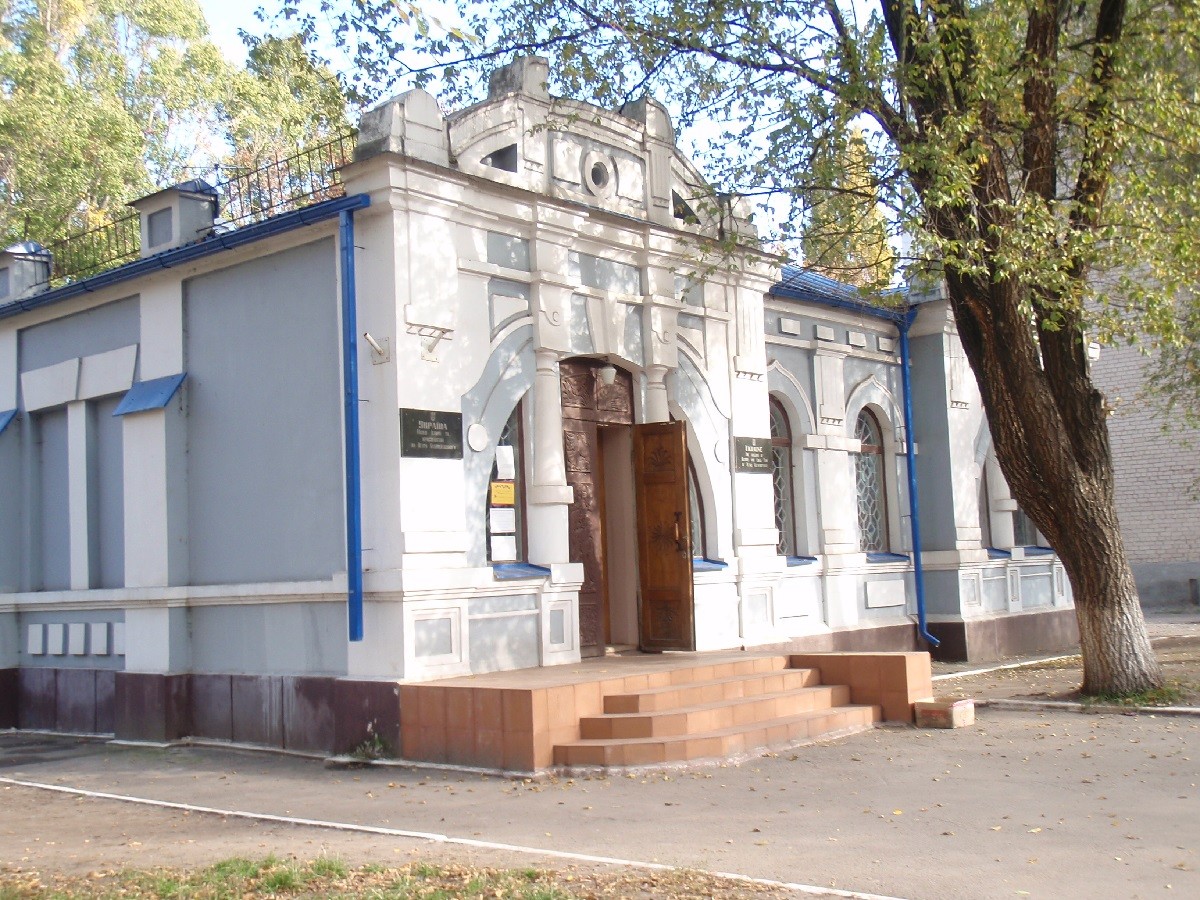
Новомосковський історико-краєзнавчий музей
Візитною карткою Новомосковська є унікальний дерев’яний Троїцький собор у стилі бароко, зведений в кінці ХVIII століття. Собор – єдиний в Україні храм, який має дев’ять куполів, з кожної сторони світу видно по три купола. Конструктивне рішення споруди не має аналогів у світовій архітектурі.
Троїцький храм був зведений Якимом Погребняком з Нових Водолаг Харківської губернії на замовлення козацької старшини в 1778 р без єдиного цвяха. У 1888 р будівля зазнала реконструкції за проектом архітектора Харманского, при цьому собор зазнав істотних змін (заміна окремих колод перетворила його в нову будівлю, з нового лісу, він не був збережений первинний нахил всередину, спотворено форму куполів і арок прорізів). Після реконструкції собору в 1887 р побудували дзвіницю, яка розташована на захід від собору. Дерев’яна, квадратна в плані, триярусна дзвіниця за стилем виконання не пов’язана з бароковою архітектурою собору, однак разом з собором дзвіниця створює найбільш видатний ансамбль дерев’яної архітектури Лівобережної України.
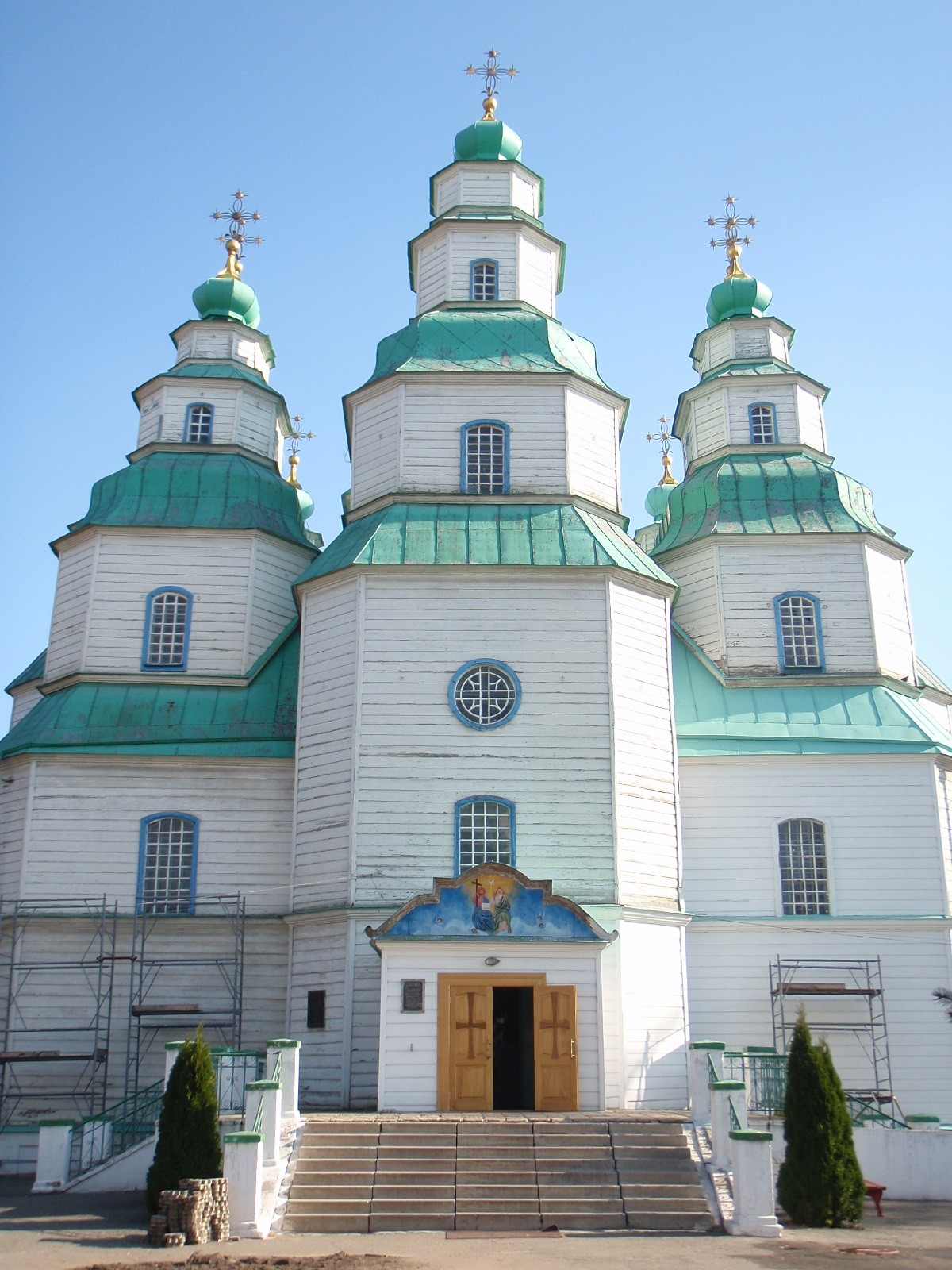
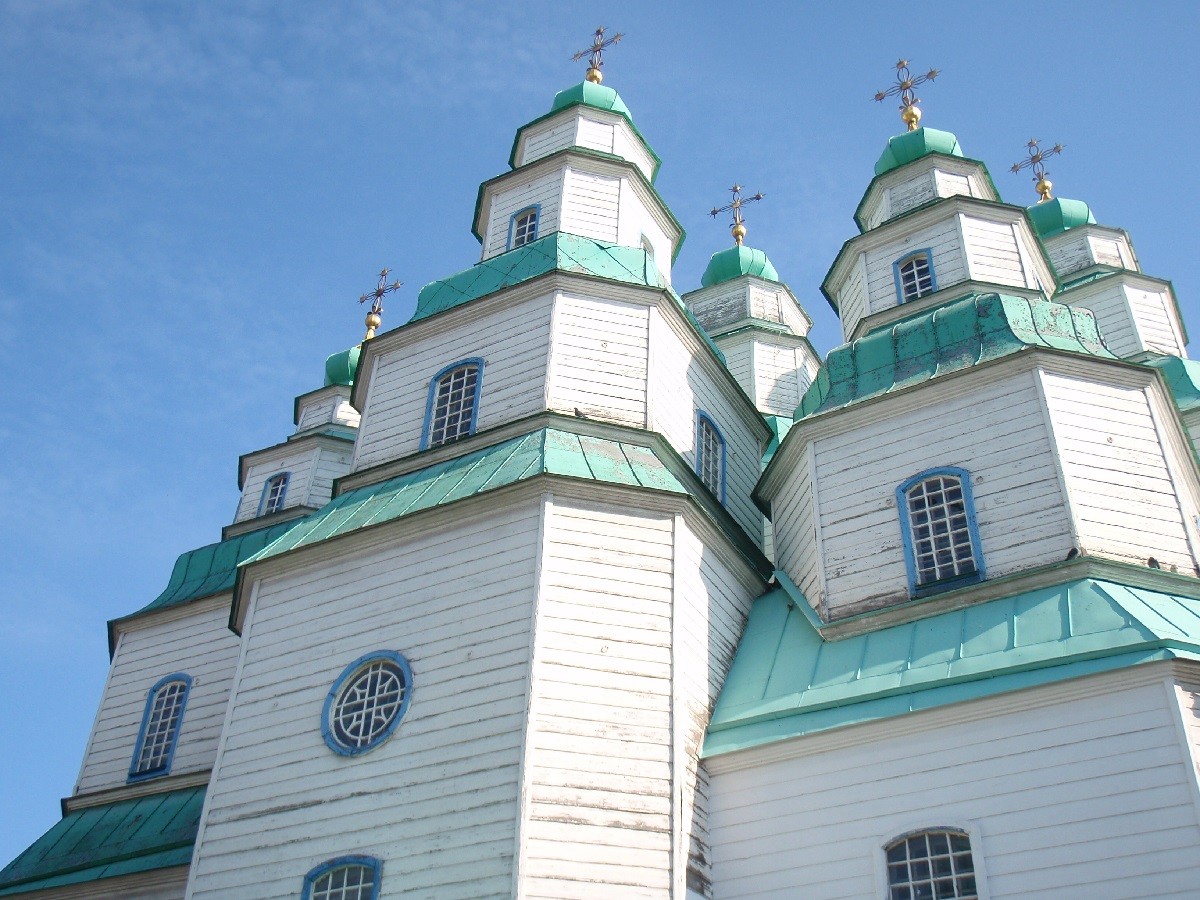
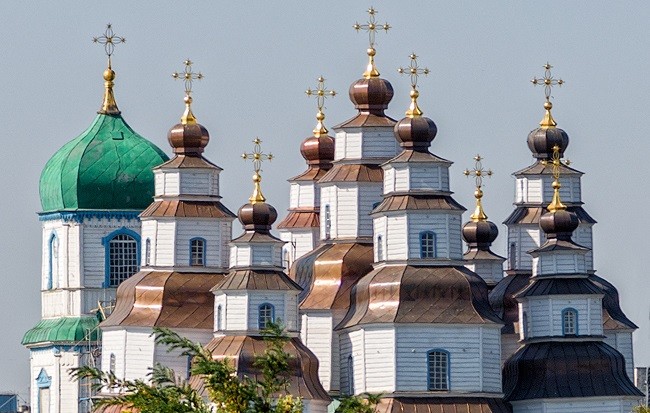
Троїцький собор
Самарський чоловічий монастир
Свято-Миколаївський Пустельний Самарський чоловічий монастир (http://samarsky-mon.church.ua/) є одним з найстаріших пам’яток Запорізької Січі, який зберігся до нашого часу. Точна дата виникнення монастиря невідома. Згадки про існування монастиря датуються 1576 г. (фортеця з церквою), 1602 г. (монастир, в якому знаходилася школа, лікували поранених і хворих козаків, доживали старі козаки), 1670 г. (відновлення монастиря). Після Прутського миру 1711 році монастир потрапив під владу Кримського ханства і лише з 20-х років XVIII століття він став відроджуватися. Відродження монастиря пов’язане з діяльністю миргородського полковника (а в 1727-1734 рр. Гетьмана Лівобережної України) Данила Апостола і його сина, до володінь якого відійшли землі Самарської паланки. Створення запорожцями 1734 р Нової Січі сприяло облаштування монастиря. Під час російсько-турецької війни 1735-1739 рр. монастир був перетворений на неприступну фортецю, захопити яку кримські татари не змогли, але монастир суттєво постраждав.
У XVIII столітті Самарський монастир знаходився під опікою Межигірського монастиря, а в економічних відносинах залежав від Коша Запорозької Січі. На середину XVIII століття припадає другий етап формування комплексу Самарського Пустинно-Миколаївського монастиря: були проведені фортифікаційні роботи, збільшилася чисельність ченців, споруджені будинки для прийому паломників, відкриті школи і лікарні, побудовані дачі, ціле село Чернече для підданих, вотчинників і прислужників монастиря. Після ліквідації Запорізької Січі монастир ще деякий час зберігав свої володіння.
У 1782-1787 роках велося будівництво кам’яного Миколаївського собору, ініціатором якого був Кирило Тарловський (в історії нашого краю більш відомий як “дикий поп”). Він був головним священиком Покровської церкви на Запорізькій Січі, багатим поміщиком, з ініціативи якого відбувалося заселення Новомосковського та Павлоградського повітів. Кирило Тарловський був похований на території монастиря, однак точне місцезнаходження його могили не встановлено.
В кінці XVIII століття настав період найвищого розквіту Самарського Пустинно-Миколаївського монастиря. У XIX столітті будівництво монастиря тривала, але вже в інших архітектурних традиціях.
Кам’яний собор зберігся до нашого часу, хоча і зазнав значної перебудови. Історичний статус монастиря був відновлений в 1998 р Самарський монастир є невід’ємною частиною духовної культури запорізького козацтва.
Нікополь
Історія Нікопольщини тісно пов’язана з історією запорозького козацтва і боротьбою українського народу за незалежність. На місці сучасного міста Нікополя була розташована Микитинська Січ (її козаки обрали Б. Хмельницького гетьманом України). На території Нікопольщини знаходилися п’ять з восьми Запорозьких Січей. Зараз ці землі затоплені Каховським водосховищем (споруджено в 1955-1956 рр.). Однак цікаві пам’ятники знаходяться в місті Нікополі та його окрузі.
Знайомство з козацьким краєм слід почати з Нікопольського краєзнавчого музею (https://nikopolmuseum-1919.jimdo.com/; https://www.facebook.com/museum19/). Серед його експонатів є багато унікальних, які представляють значну історичну і художню цінність: чумацький віз, козацьку зброю, запорізька ікона-ставротека і інші культові предмети з Січової церкви. Найдавнішим запорізьким експонатом музею є залізний кований хрест з Микитинської Січової церкви.
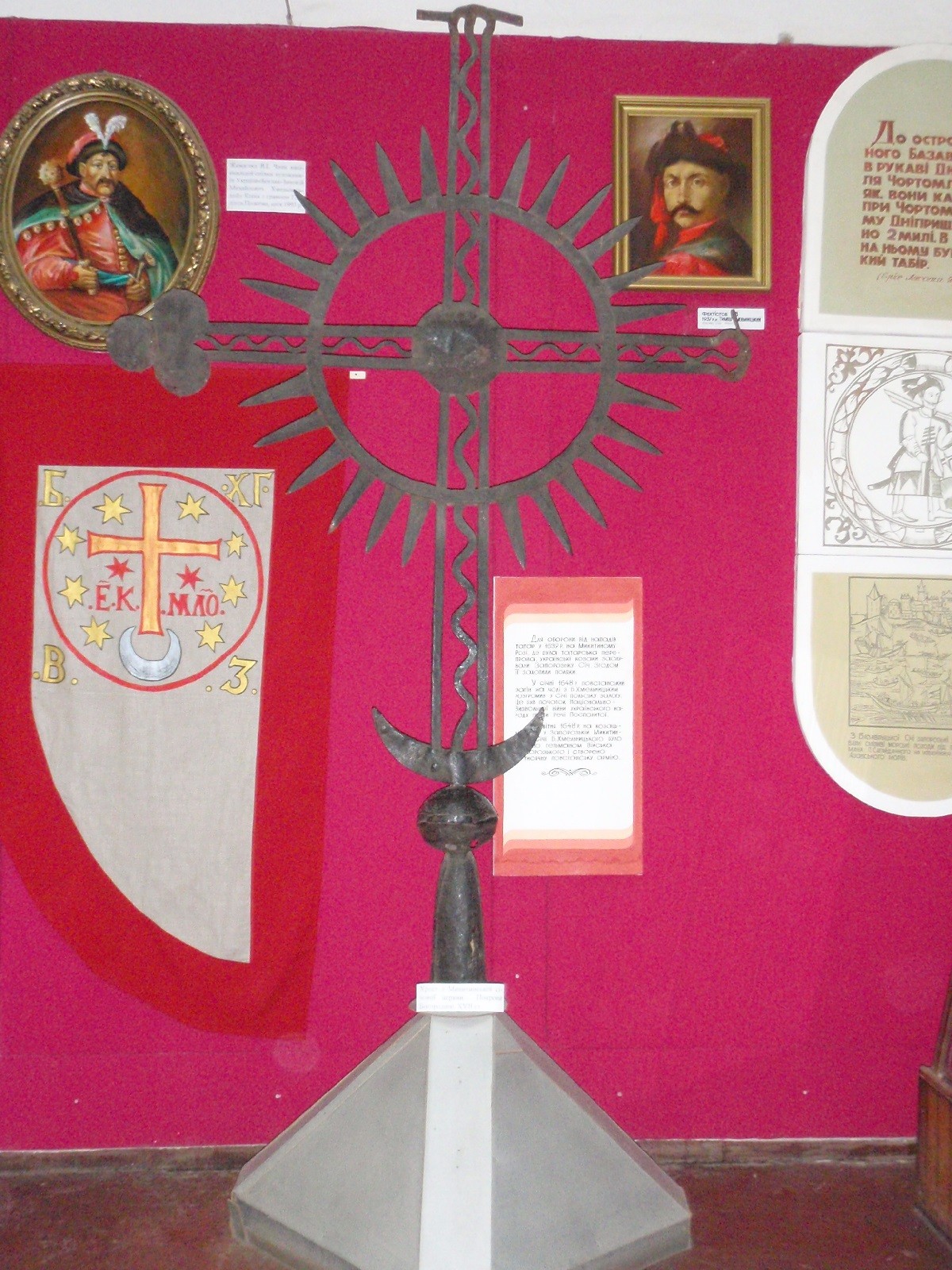
Хрест з Микитинської Січової церкви XVII в.
На згадку про початок козацького повстання на Микитинської Січі в старій частині Нікополя споруджені пам’ятник Богдану Хмельницькому і гранітний пілон з меморіальною дошкою про обрання його гетьманом.
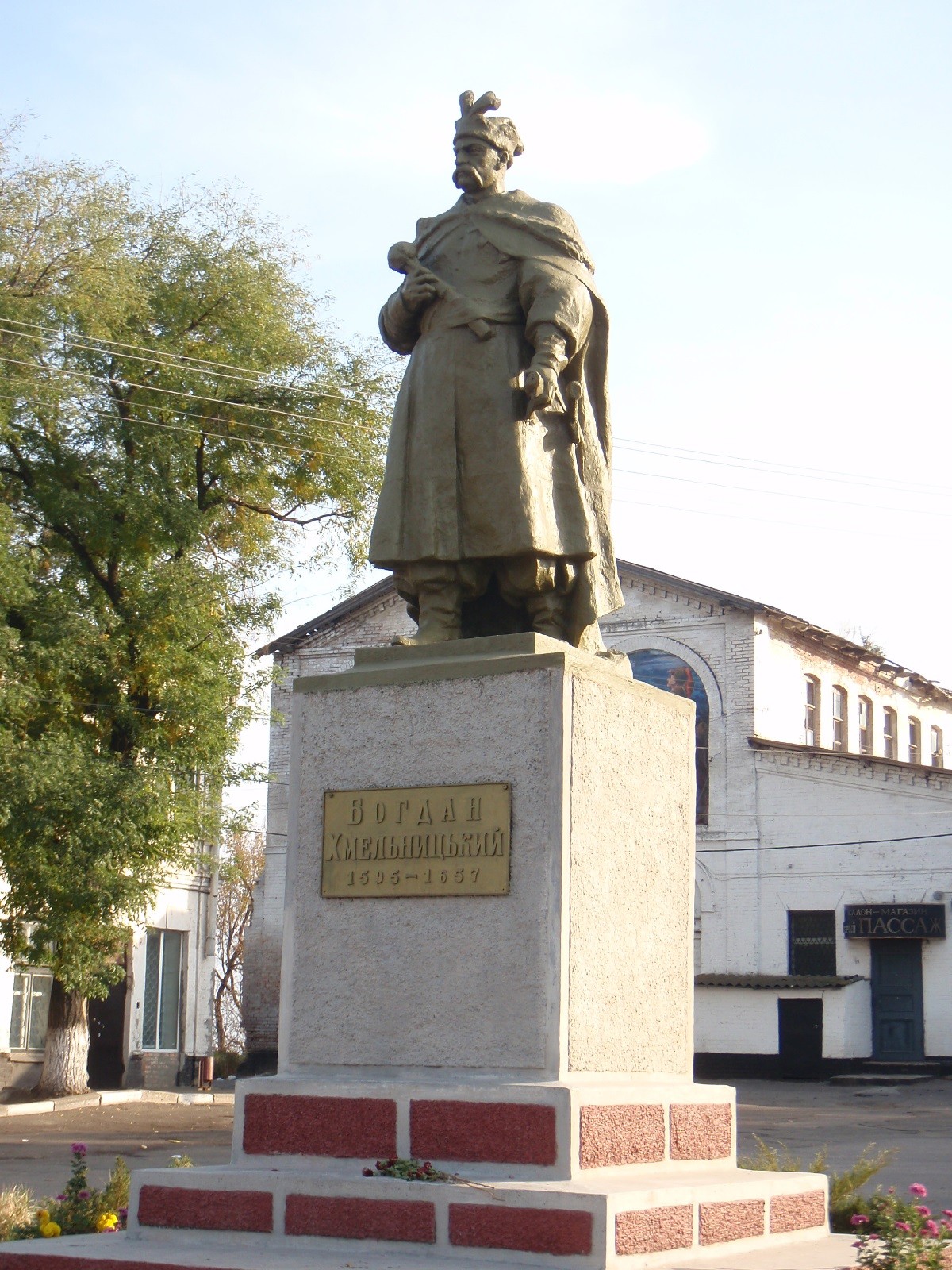
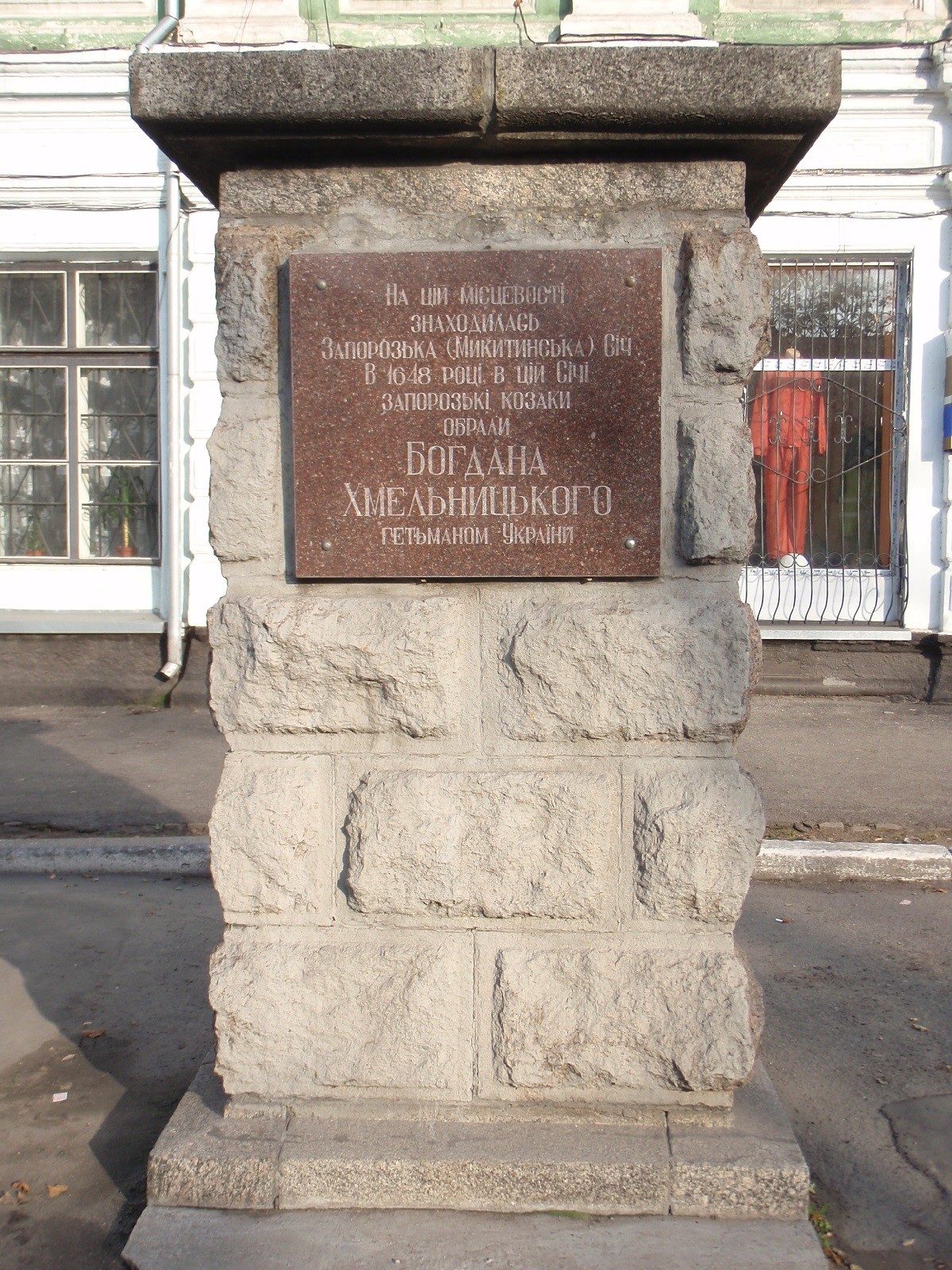
Пам’ятник Б. Хмельницькому (Нікополь)
Могила Івана Сірка
Меморіальний комплекс кошового отамана Івана Дмитровича Сірка знаходиться в селі Капулівка Нікопольського району. Це одна з небагатьох пам’яток, яка збереглася з козацьких часів на Нікопольщині.
У 1663-1680 рр. запорізькі козаки вісім разів обирали Івана Сірка кошовим отаманом, вручали символи вищої влади. Він прожив славну, героїчну і повну пригод політичне життя, про нього складено багато пісень, легенд, козацьких історичних дум. Зокрема, з особистістю Сірка пов’язана легенда про сатиричному відповіді запорожців турецькому султану, яка стала основою для створення І. Рєпіним картини “Запорожці пишуть листа турецькому султану”. У народній пам’яті Іван Сірко запам’ятався як “характерник” (чаклун, духовний наставник), який в боротьбі проти турків і татар використовував магічні чари, умів перевтілюватися і не боявся куль. Помер Іван Сірко 1 серпня 1680 року на своєму хуторі Грушівка (нині Іллінка Томаківського району) і похований біля села Капулівка.
У 1967 р прах Івана Сірка був перепохований в Сторожовий Могилі. У 1980 р встановили нове скульптурне зображення отамана на основі реконструкції Г. Лебединської.
Вшанування пам’яті отамана було центральною подією в 1990 р під час святкування 500-річчя українського козацтва. Однак тільки в 2000 р відбулося повне поховання праху кошового отамана, реконструкція меморіального комплексу. Про могилу Івана Сірка зараз піклуються козацькі організації Придніпров’я.
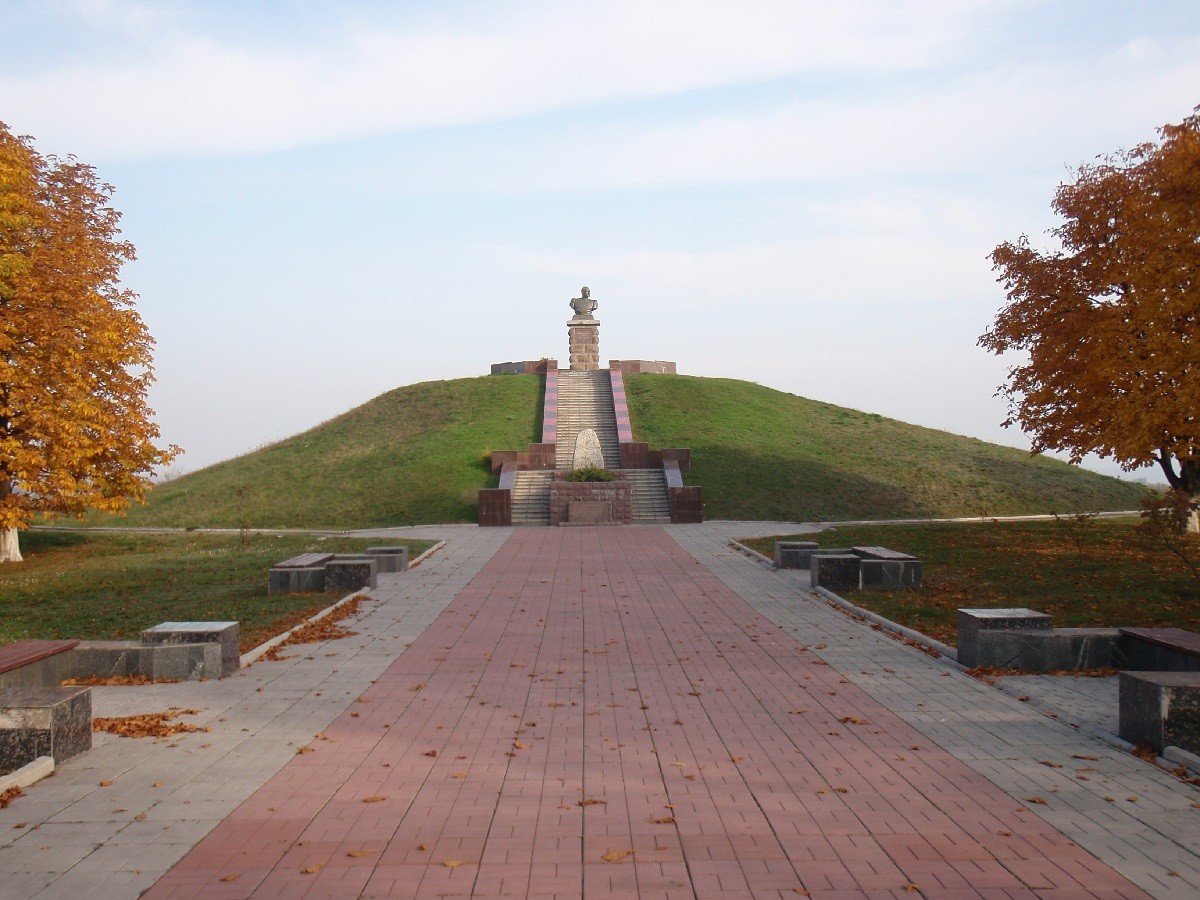
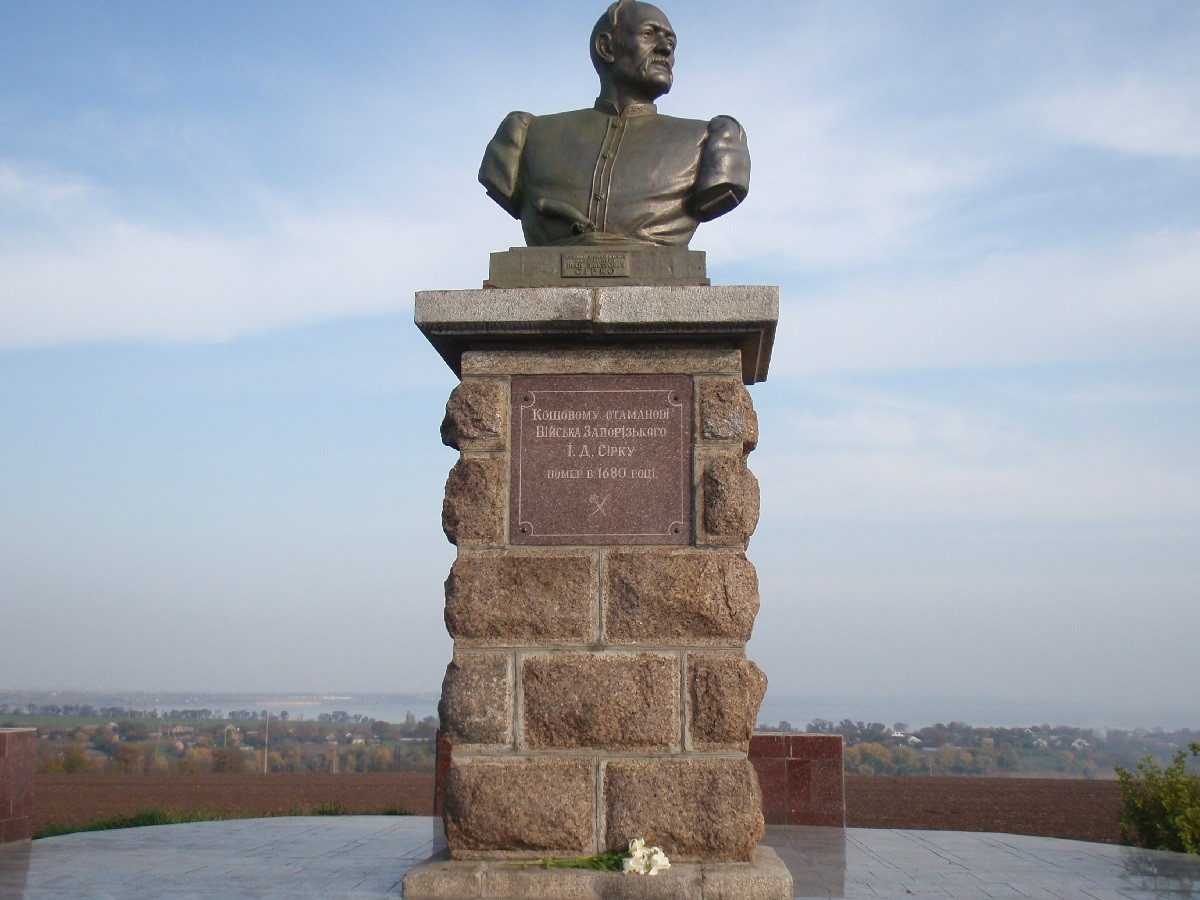
Меморіальний комплекс І. Сірко поблизу с. Капулівка